How do you help middle and high school homeschoolers build academic focus?
Focus isn’t something kids are born with; it’s a skill they build through practice. So when tween and teen homeschoolers have trouble focusing, help them find concentration-building strategies that work for them.
Now that my son is in sixth grade, he’s doing work that requires him to really dig in and focus. He’s doing good work, but he’s so easily distracted, and he has trouble concentrating. Is there anything I can do to help improve his focus?
Learning to focus can be hard even for adults, but most of the time, all you need to boost your concentration is a change in your routine and regular practice, says Michael Coates, M.D., chair of the Department of Family and Community Medicine at Wake Forest School of Medicine. Try these easy-to-implement actions to help your son improve his focus.
Set a timer.
Something about an established time limit — “Work on this math for 15 minutes” — inspires focus, so don’t hesitate to break out the kitchen timer when you get to a subject you know taxes your son’s concentration skills. Start with small increments of time, and gradually increase time spent until you reach the amount of focused time you’re shooting for. This works best if you don’t rush — you don’t have to increase the time every day. Instead, give your son a chance to really adjust to each increase before adding more time.
Check your sleep habits.
Around sixth grade, some kids start making the shift to adolescent sleep habits, which means their bodies naturally want to stay up later and sleep longer in the mornings. Kids really need at least seven hours of sleep a night to concentrate during the day, so if your child’s sleep patterns are changing but your schedule isn’t, it may be time to try something different. Even just starting an hour later in the morning may be enough to improve your son’s concentration.
Practice mindfulness.
If your son starts to drift off during reading assignments or conversations, it may be that he’s spoiled by the everything-now nature of video games, Wikipedia, and Twitter. To help him shake that I-could-be-doing-10-other-things-now feeling, encourage him to pause and wiggle his toes or snap his fingers. That moment of focused concentration will help his focus settle back down.
Have a glass of water.
A 2012 study in the Journal of Nutrition found that being as little as two percent dehydrated — such mild dehydration that your body doesn’t even feel thirsty — can negatively impact concentration. Pour your son a big glass of water before his next intensive focus session.
Jump around.
Exercise is one of the best ways to improve focus, so take plenty of action breaks to walk around the block, kick a soccer ball in the backyard, do jumping jacks in the living room, or play a quick round of Wii Sports between subjects.
Bottom line: Don’t expect your son’s concentration abilities to develop on their own. Help him sharpen them over time by test-driving different focus-boosting techniques.
What’s the best way to organize your homeschool library?
The key to useful and accessible homeschool library: Good organization. If you want to wrangle your book collection into a well-organized library, you’re going to have to get hands-on. Here’s how.
I have a problem: Our library is out of control. I don’t mind the bookcases taking over our house, but I hate when I discover a book that I bought for a particular subject but forgot about until months after we wrapped up studying that subject—or worse, when I buy a book only to find that I already own a copy of it. Is there any way to organize our homeschool library so that it’s a resource and not a headache?
The key to useful and accessible homeschool library: Good organization. If you want to wrangle your book collection into a well-organized library, you’re going to have to get hands-on. Here’s how:
Start by making an inventory.
I know! It’s a huge project. It’s dusty and messy — and it’s probably not something you can accomplish in a single afternoon. But it is the only place to start if you really want to organize your library. Start a list of all the books in your collection — I use index cards, but you could set up an Excel spreadsheet or use a tool like LibraryThing instead. (If you have a lot of newer books, LibraryThing has an app that scans book barcodes to instantly upload their information, which is pretty convenient.)
As you sort, you may find books that you can discard or give away — I hear this happens sometimes, though I’ve not personally experienced it. If you uncover books you can part with, trade them in a used bookstore for more books, drop them off at your homeschool group’s free pile, or donate them to your favorite thrift shop. (You can try to sell high-quality or expensive books you’re ready to let go of.)
Catalog your books.
A list of books is great, but you really want to make it easy to find books about, say, Egyptian history and mythology or the California gold rush when you want them, right? Tag your books with labels to help you sort them.
With my index cards, I create subject cards where I list books I own in a particular subject — medieval history, coming-of-age novels, dinosaurs, etc. (Some subjects require more than one card, some books go onto multiple cards, and I jot new titles as we acquire them.) In Excel, designate a field for tags. The idea is to create a simple system that will remind you what books you have on any subject when you want to find them, so it’s better to err on the side of extra tags — that way, when you hit search, you’re more likely to actually find what you are looking for.
Shelve your books.
Lots of homeschoolers have more books than shelf space. To deal, “shelve” subject-specific groups of books in plastic bins, and label your bin with the subject (Japan, biology, astronomy, etc.) and a list of the books inside. (I think this is easiest with a bin per subject, but of course you can lump subjects together if you prefer.) Then note which books are binned — I fold a sticky flag over the right corner of my index cards, or you can change the color of binned books in your spreadsheet or just leave yourself a note.) Then, when you’re ready to tackle a particular subject, all your books are ready in one place.
For the books that go on your shelves, sort them by author, subject, or size, and note where to find them. (My daughter’s Warrior Cat books are shelved as O-1, cluing me in that they’re on the first bookshelf in her room, while our Story of the World collection is in the foyer bookcase: F.)
Keep it organized.
For this system to work long-term, you have to be vigilant about updating it every time you add a new book to your collection. At our house, new books go into a holding box, and they’re considered unavailable until they’ve been cataloged and shelved — otherwise, they’d drift off with a happy reader and vanish from our records. I don’t love having to move things around in the garage to add a single volume to our U.S. History bin, but I do love the fact that when we need our U.S. History collection, it’s easy to find and enjoy.
Moving to the Passenger Seat — Literally and Metaphorically — as Our Homeschooled Kids Grow Up
Learning together has become our family culture, and I imagine our shared education will extend far beyond their graduation. I look forward to the lessons they have in store for me. There’s so much to see from the passenger seat.
Homeschooling may not look exactly the same as our kids get older, but we’re all still homeschoolers at heart.
We circled the parking lot several times before settling for a parking spot a block away from the library. So many station wagons and minivans signaled that today was preschool story time. It had been years since I loaded my preschool aged children into our Volvo wagon to make our weekly trek to the library, where we’d sit on carpet mats on the floor of the community room to hear our favorite librarians read out loud.
“It seems like just yesterday that we were going to story time, and now you’re driving me to the library,” I said to my daughter as she parked my Subaru.
Times change, cars change, roles change. And just like people tell you when your kids are young, it happens so fast. My little girl is now taller than I am. She has her driver’s permit and has claimed her own set of keys to my car. In a few weeks, she will be done with high school, two years ahead of schedule. In a few months, she will get her driver’s license and begin taking classes at the local community college. If all goes according to her plans, she will also get a job. These are the events she’s been preparing for the last ten years of homeschooling, but it’s hard to believe they’re scheduled on this year’s calendar.
Even though I have one child on her way to college, and another child who has opted to attend a traditional middle school after homeschooling throughout the elementary grades, I am a homeschooler at heart. Some things don’t change. As my kids have grown and chosen their educational paths, our classroom has expanded beyond math at the dining room table, science at the kitchen island, PE at the park, literature via audiobooks in the car, and field trips to historical monuments. Learning together has become our family culture, and I imagine our shared education will extend far beyond their graduation. I look forward to the lessons they have in store for me. There’s so much to see from the passenger seat.
4 Easy, Effective Ways to Plan Your Homeschool Year
Whether you’re a new homeschooler not sure how to get started or an experienced homeschooler looking for a little planning inspiration, these simple strategies will help you get organized for the learning year ahead.
Whether you’re a new homeschooler not sure how to get started or an experienced homeschooler looking for a little planning inspiration, these simple strategies will help you get your secular homeschool organized for the learning year ahead.
Have a student-teacher conference.
Include your kids in the planning process. When kids are active participants in homeschool planning, they take on some responsibility for their own educations and take more pride in their accomplishments.
Start an end-of-the-year homeschool tradition hanging out together at coffee shop or diner to conduct a post mortem of the school year. Which curriculum did your child like or not like — and why? Which publishers’ texts would he like to use again? What area of study is he most interested in exploring further? If you have multiple kids, try to make time for a separate sit-down with each one.
This simple homeschool tradition can give you direction and focus when planning the next year. It can be helpful to bring a list of classes and activities to consult during your conversation — it’s easy to forget things that happened in your homeschool back in October after your second mint-chocolate-chip frappe.
Host a homeschool planning party.
Invite a few homeschooling friends over for a casual secular homeschool curriculum party. Keep it simple — open a bottle of wine and order in dinner — and ask your guests to bring their favorite curricula from previous years and new material they’re excited about using.
These informal get-togethers can be a great way to get inspired and to discover curricula you never knew existed. These planning parties are also a great way to clear some space on your bookcases — keep a giveaway stack of books and materials, and pass on outgrown or not-quite-right materials.
This is also a great opportunity to chat about everything from organizing your day to keeping track of lessons to finding the best calculus teacher. The real experts in homeschooling are the parents who do it every day, so you’re much more likely to find a brilliant system from a fellow homeschooler than you are from a generic organization website. If you’re still building your local homeschool community, a planning party can be a great way to get to know other homeschoolers, but you can also get planning support from Facebook groups and online forums. If your homeschool pals are scattered far and wide, consider hosting a Facebook curriculum party instead of an in-person get-together.
Make a love it-need it-hate it list.
Whether it’s your first year homeschooling or your fifteenth, you’re your own best inspiration. Get oriented by making three simple lists. (I have a whole step-by-step guide for doing this you can grab for free.)
Start with a list of all the things that are going great in your everyday homeschool, whether it’s making Monday baking day, doing narrations with Story of the World, or starting the morning with yoga. You already know that these things work well for your homeschool, so when you’re stuck between two choices, opt for the one that’s closest to something that’s already a perfect fit.
Next, make a list of all the things you need to cover in the coming year — maybe it’s time to get serious about multiplication, or your daughter’s dream college requires a lab science for sophomore year. You’ll want to find materials to help you fill these needs.
Finally, do yourself a favor and make a list of all the things you just plain haven’t enjoyed, whether it’s your drill-and-drone math curriculum or your way-too-busy Monday schedule. Get rid of the things that aren’t working for you, and fill that space with books and activities you do like.
Set up a DIY homeschool retreat.
Sometimes, you just need a little homeschool inspiration before you dive into another year of secular homeschooling.
Book a hotel room for the weekend, and pack your suitcase with some of those books you’ve been dying to read (On our list: Lighting Their Fires: How Parents and Teachers Can Raise Extraordinary Kids in a Mixed-up, Muddled-up, Shook-up World by Rafe Esquith, Teaching What Really Happened: How To Avoid The Tyranny of Textbooks and Get Students Excited About Doing History by James W. Loewen, Point-Less: An English Teacher's Guide to More Meaningful Grading by Sarah M. Zerwin) and lectures you want to hear (consider Susan Wise Bauer’s Homeschooling the Real (Distractible, Impatient, Argumentative, Unenthusiastic, Non-Book-Loving, Inattentive, Poky, Vague) Child, The Homeschool Scholar’s A Homeschool Parent’s Guide to Grades, Credits and Transcripts, or Pam Sorooshian’s Unschooling and Math.)
“What If?:” How We Started Homeschooling
It all started with a brochure. Patricia looks back on the first days of her homeschool life and the decision that — in retrospect — seems inevitable.
It all started with a brochure. Patricia looks back on the first days of her homeschool life and the decision that — in retrospect — seems inevitable.
Let me take you back, way back, to the fall of 1996. Maybe you were in high school or college, listening to Alanis Morissette and getting riled up, or maybe you were younger, watching Boy Meets World on TV every Friday night. Because I am probably older than you, I was a young mother of a four-year-old boy and a baby girl. The four-year-old wore overalls and a deep side part in his hair and looked a lot like Dennis the Menace. His sister had such big eyes that she kind of looked like Yoda, and some of the fattest legs you’ve ever seen on a baby. And I was their mother, still wearing little black skirts that hit mid-thigh, with tights and oxford shoes, smitten with the notion of homeschooling.
It started with a brochure. Which is a fancy word for a piece of paper folded in thirds, but it was 1996, and we still got information from pieces of paper. It was at the library, on a shelf. A piece of paper, folded in thirds, from the Northern California Homeschool Association, listing resources for homeschooling.
Homeschooling. I’d thought about it when Henry was two, and I met the first homeschoolers I’d ever come across, a family with five kids. The kids didn’t go to school — none of them. They didn’t go to school! I was a former elementary teacher and the whole notion was as inconceivable to me as the concept of email in those days. Still, I was intrigued enough to find a book about home- schooling at the library, and played with the idea for a few weeks that fall. But ultimately I lay in bed thinking about lunchboxes, and school Halloween parades, and playing tether ball on the blacktop at recess. I thought about Septembers and the new shoes that came with them. My heart jittered as I flipped through the losses. Homeschooling meant walking away from the American childhood experience, and I just couldn’t do that to Henry.
When I picked up that brochure two years later, something had changed. Maybe it was that I knew Henry better now, or maybe it was how kindergarten lurked in my peripheral vision. Or maybe it was something inexplicable, like the way the boy who grew up down the street had a different gleam about him one day in pre-algebra class, and suddenly you couldn’t stop writing his name on the inside flap of your Pee-Chee folder.
It did feel a little like puppy love. I picked up that brochure and, like that, the idea of homeschooling wrote itself into every margin of my mind. I researched it at home, dialing up AOL on our computer — dial-tone, beeps, static, that unforgettable spring-sproing, rocket launch fuzz — and after two or three attempts got connected. Do you remember the Internet in 1996? How you spent more time looking at that little hourglass icon than you did actual content? How the images revealed themselves slowly, top to bottom, like a theater curtain in reverse? None of this seemed unreasonable to me back then; it was just what it took to get to the homeschooling message boards I found and lingered on that fall. People — mostly mothers — posted questions or shared their homeschooling experiences, and others responded. I scrolled and scrolled, searching for posts that might answer my concerns. How do you meet homeschooling friends? What do kids miss out on when they don’t go to school? How do you tell your in-laws? I clicked and hoped, clicked and hoped. Sometimes it took a full minute for a new page to load. There was a lot of bickering about what did and didn’t constitute unschooling, but what struck me most was the community on those boards. Homeschoolers were real, connecting with one another! What started as a wisp of a notion gathered the weight of possibility.
What if? What if Henry didn’t go to school the next fall? What if we found a local community of homeschoolers? What if I didn’t have to send my kids off to some other teacher’s classroom, while I got a job teaching other people’s kids? The possibilities glittered brighter than a new lunchbox.
I read every homeschooling book I could get my hands on that fall, which wasn’t hard — the stack was fairly short in 1996. I read the Johns, of course: John Taylor Gatto stirred me up over what happened in classrooms; John Holt helped me see how kids might learn outside of them. Smaller, quieter books by homeschooling mothers moved me even more. There was Susan Richman in The Three R’s At Home, a book I lucked upon in the library and checked out so many times that to this day I picture it in its clear plastic library cover, instead of the jacket-free version I bought later and still own. Richman was a former teacher too, and downright gleeful in laying open her days with her kids, writing about how different learning looked outside a classroom, with one’s own children. There was Nancy Wallace’s Child’s Work, a book with a subtitle that explained everything I loved about it: Taking Children’s Choices Seriously. Wallace shared Richman’s fascination with her own children, but her approach was different. Where Richman was animated, Wallace was contemplative. She studied her children and their pursuits like a smitten scientist. These women showed me what a homeschooling life might look like, and I wanted it. As much for myself as for my kids.
So this is how I learned about homeschooling that fall: from the Internet and books. It seems a little crazy to me now. I didn’t know any homeschoolers. I went to a homeschooling information event in Berkeley one night, and saw real flesh-and-blood homeschoolers breastfeeding their children and answering questions, but it would be another six months before I’d get my kids to a park day and talk about homeschooling with an actual person.
Instead, I had an ongoing dialogue with myself in my journal. Henry was going to preschool three mornings a week that fall, and I found myself comparing what I saw him do at preschool — it was a co-op — with my new notions about homeschooling and learning.
One set of journal pages starts: I suppose the wide choices at preschool don’t necessarily encourage focus. Henry worked for days on that castle drawing in his bedroom, and I’ve never seen him as excited about any- thing at preschool. Another ramble begins: At preschool he plays with other children — very important. But does he really need that five or even three days a week? And couldn’t he get that from a homeschooling community?
If I didn’t have my journals, I’d remember that fall as a time of waffling, of back and forth worries about whether we should or shouldn’t homeschool. But page after page, line after loopy line tell a different story. My mind was made up almost instantly. One morning I picked up that brochure; days later I was resolute in my conviction to do it. It just fits the life I envision for us, I wrote. The harder part was declaring our choice — pulling Henry from the preschool and announcing to our families, to the world, that we were homeschoolers.
I marvel at that young mother in her little black skirt: how was she so sure of herself ? Keeping her kid out of kindergarten, playing hooky with society’s definition of childhood. Yet there I was, committing to a life choice that would carry on for the next twenty years, based on little more than a few books, some janky Internet message boards and a lovesick twittering in my gut. I opened that brochure, one flap, two, and we were off.
Like that.
Fine advice for any homeschooling parent is to focus on what your child knows, rather than what she doesn’t know. The 1996 me didn’t know she would still be homeschooling nineteen years later; she didn’t know there would be heartache over finding community, slammed doors over long division or teenage days of longing for something else. But I knew we’d be happy if we quit the commute to preschool, if I settled on the couch in the morning when the sun was easy, reading Winnie the Pooh aloud with voices for all the characters, even Eeyore’s sorry drawl, the baby at the breast and the boy listening at my feet with blocks, building.
“Read more, Mama,” he said, in that crunchy sugar four-year-old rasp, at the end of a chapter. And so I kept going.
PATRICIA ZABALLOS writes about homeschooling and writing on her blog, Wonder Farm. She is working on a book of essays.
How do you plan a move when you’re homeschooling?
Help! We’re trying to sell our house, and homeschool stuff is everywhere. How do you homeschool while you’re staging your home to sell?
We’re trying to sell our house, which means no piles of books or stinky science projects for a while. Any tips for homeschooling while your house is staged?
I am neither an expert on home staging nor on housekeeping while homeschooling, so I asked a friend in real estate for her recommendations. She says the biggest challenge most homeschool families face is returning their home to “normal.” For instance, lots of us use the dining room or formal living room as homeschool central, which can be off-putting to some buyers. If you’re so serious about selling that you’re actually staging your home, this may mean drastically changing your space to make it more neutral. Consider setting up your rooms with a traditional flow — a table and chairs in the dining room, an office or sitting area in the formal living room, etc. You probably know this, but decluttering and packing non-essentials will go a long way toward making your house buyer-ready. (As soon as you pack up a box of books, you’ll discover that the one title you really want is in the box — accept that this will happen, and just plan to hit the library when it does.)
Keeping things tidy is vital. If you have clutter-prone areas — our dining room table is our worst offender — make clearing them off a priority. If you aren’t naturally neat, keep a few big laundry bins under your table for emergency get-that-cleaned-up-now sessions — throw a nice tablecloth over the table, and no one will be the wiser. Move homeschool materials to free-standing dressers and armoires so that they don’t clutter closets — buyers will check out your closets, but they’d have to be pretty nosy to rifle through the furniture that’s not part of the house.
As for academics, the selling-your-house period is an ideal time to dive into unit studies or intensive projects like NaNoWriMo (most people do it in November, but you can write your book any time of year). Focusing on one topic at a time makes it easier to quickly shift gears if you need to—and gives you the freedom to take spontaneous field trips during house showings.
Channeling the Healing Power of Art in Your Homeschool
When life gets tough, an art day can be just what the doctor ordered, and when the world seems dark, a community art project can help us find a little light.
When life gets tough, an art day can be just what the doctor ordered, and when the world seems dark, a community art project can help us find a little light.
On a Saturday morning about a month after [the 2016] election, I brought my two boys to a local community center, where my younger son’s middle school art honor society was helping to paint murals. There were some kids from the middle school with their parents (and an older sibling, in our case), some volunteer artists, including my son’s art teacher, and kids and adults from the community center, which is part of a public housing complex. Together, we were going to paint in four murals that had been sketched out by the volunteer artists. Later, they’d be hung within the community center.
It was a busy, hectic morning. My older son and I quickly discovered that our best role was in the background, making sure paintbrushes were clean, changing out rinsing water, and helping anyone who needed it with getting paint. Many, many hands added color to the pictures. As the morning went on, I realized that for the first time in a month, I didn’t feel overwhelmed with dread. My hands were busy, my mind was occupied, and I was in a room full of people of all ages, equally busy creating colorful, community art. It was exactly where I needed to be.
In times of uncertainty — which is one of the subtlest words I can choose to describe the current climate in the United States — it’s almost instinct to gather together. Doing so in order to add beauty and inspiration to the world feels even better. And gathering as a community — including members of the community you may not know yet — seems vital. Art-making can be used as the common ground around which to gather.
The event my kids and I attended was coordinated by Creating Communities, a nonprofit organization in Annapolis, Maryland, that provides arts-based mentoring programs; all we did was show up. If a similar opportunity doesn’t exist in your community, try to create one. Obviously, if murals are your objective, it will help to have some experienced artists to sketch them out. But plenty of community-based art experiences can be had without needing superior artistic skills! As with any other event, figure out who and where, then tailor the what to the space.
Who: What parts of your community do you want to bring together? Do you envision a program open to everyone (and thus in a public space), or something more specific, as the mural painting was to the community center? Make sure your organizing is done with the relevant community members and not presented as a final plan. Partnering should occur early in the process, not at the end.
Where: This may be dictated by who is involved. Do you want a public event at a library or a park? Perhaps your co-op space is hosted by or shared with another group and you’d like to partner with them (and simultaneously get to know them better) to beautify your shared space. Or you can partner with a community or recreation center. Think creatively; where do you see a need for some art-making?
What: Community art-making doesn’t need to be elaborate and permanent, like murals. It can be one or the other or neither. A bunch of colored chalk in the hands of kids and adults can become something fun and simple or beautiful and complex; either way, it’s temporary. Prayer or Hope Flags are simple to make and become a powerful art installation when complete. Unless you’re planning a drop-in, public event, make sure to include representatives from the community you’re working with during the brainstorming process.
Remember to value the process overall. Community art-making is first and foremost about coming together, and that should be a relaxed, happy experience. Because our group was painting murals, some areas were touched up at the end by the volunteer adult artists, but during the group painting, nobody was criticized or bossed around for color choices or their ability to stay in the lines. If your project involves a set idea on what the product should look like, make sure to figure out a way for that to happen while also honoring everybody’s contribution to and enjoyment of the process.
Most importantly, spend some time talking to people you don’t know while you make art alongside them. Create something, together.
(Additonal/optional: this is adapted from a post that first appeared at amyhoodarts.com in May 2015)
How-To: Block-Printed “Hope” Flags
This is adapted from a post that first appeared at amyhoodarts.com in May 2015.
These are inspired by Tibetan Prayer Flags, which are hung in the elements until they disintegrate, releasing the prayer or hope. Participants can depict a hope for themselves, their family, or their community and add it to the display. Prayer flags were traditionally block printed, but this uses a printmaking method accessible to all ages and skill levels, scratch-foam printmaking.
Materials:
7”x9” rectangles of repurposed cotton cloth
Styrofoam trays
pencils
liquid acrylic craft paint
foam brushes
clothesline
Preparation:
Cut the rectangles from repurprosed cloth if possible (solid, light-color sheets are perfect). Using a rotary cutter with a pinking blade or pinking shears makes a zig-zag edge, which cuts down on fraying a little. Press a fold at one end to create a 7”x7” square and stitch to make a casing. Using a chain-piecing method makes this go more quickly, but backstitch at the beginning and end of each casing so they don’t come undone.
Using a craft knife, metal ruler, and cutting mat, slice the raised edges from the Styrofoam trays (which can be purchased in packages of 25-50 online) and then cut them into quarters. If you choose to repurpose the trays, stick with vegetable trays rather than ones used to package raw meat, for hygienic reasons.
Method
1. Think about what hope, dream, or wish you’d like to share, and how you can represent it with a simple image.
2. Using a pencil, draw the image onto the smooth side of a Styrofoam rectangle. You want to indent the Styrofoam, but not make holes in it. Your image will print in reverse, so keep that in mind while drawing. Words are probably too tricky at this point unless you are very good at mirror writing.
3. Paint a thin layer of acrylic paint onto your scratch-foam drawing. If it’s too gloppy, your image will get obscured when you print.
4. Take a look at a blank hope flag. The casing (the folded over and sewn bit) is at the top, and the fold is towards the back. Lay the front of the flag over your painted foam and firmly smooth it to transfer the paint. Don’t wiggle it around or your image will smudge. Just firmly press. Then peel it off. Optional: Have permanent markers on hand so people can add words to their picture.
5. Run the string through the casing and hang the flags to dry; this also creates your display as you go.
Optional: Have paper available so participants can make a print to take home and/or send them home with their printing plate.
Liquid acrylics don’t require heat-setting to be permanent on fabric, so your display makes itself as people create flags. Hang outside or in to beautify your space and remind the community of its shared hopes.
Homeschool Family Camping Destination: Olympic National Park
Take a homeschool family field trip to Olympic National Park.
Looking for a little homeschool camping adventure? Olympic National Park has 1,441 square miles of rainforest, glacier-fed lakes, mountains, and coastline to explore.
by ANGIE COLLINS
Headed to Olympic National Park this spring? Keep these tips in mind.
“Take advantage of informed hiking.”
Hiking is one of the best ways to explore the park. Kids can check out a Discover Backpack at any visitor center, stocked with nature identification guides, binoculars, magnifying lens, nature journal, safety whistle, and light. The included field worksheets are a fun way to add a little focused study to your family hike, whether you’re elk-spotting in the park’s southwest corner, catch-and-release fishing at Crescent Lake, hiking through old-growth forest to Marymere Falls, or soaking in the spectacular mountain views from famously windy Hurricane Ridge. Pay a visit to the Makah Museum, an archaeological and anthropological research center focusing on the Makah people of the Pacific North- west. A mudslide sometime between 300 and 500 years ago buried the summer village of Ozette, and the — well-preserved — village was rediscovered in the 1970s, offering a fascinating look into the past.
“Don’t stop with one rainforest.”
Olympic National Park is home to four separate rainforests. The most accessible is the Hoh Rainforest — the 0.8- mile Hall of Mosses trail feels like a secret road through Fairyland. This trail is like a rainbow all in shades of green: turquoise spruce, emerald ferns, olive moss in the trees, and chartreuse moss on the rocky banks of the Hoh River. The Quinault Rainforest is a bit of a drive — about three hours from Port Angeles — but it’s also home to the world’s largest Sitka spruce tree, a 1,000-year-old tree that stands 191 feet high. Let your kids see how far they can stretch their arms around the gigantic trunk. If you’re feeling adventurous, head even further afield to Bogchiel or Queets, the most remote rain forest, accessible only via 11 miles of curvy rustic roads. (If you have issues with car sickness, skip Queets with my full support.)
“Make time to play in the water together.”
Stop by a visitor center to grab an Ocean Steward booklet for your Junior Ranger, and explore the diversity and beauty of the park’s coastal ecosystem. Kaloch Beach is one of the best places to go tide- pool hunting, but make sure you pack a tide chart because the water levels can change quickly and you don’t want to be caught unawares. Thirty minutes before low tide is the best time to scout tidepools. Visit in April, and you may catch sight of gray whales on their migration to LaPush. Rialto Beach is the place to spot sea stacks, dramatic rock-like columns formed by erosion. The choppy sea is not a great place for young swimmers, but the beach dotted with enormous logs of driftwood and rocky coves is picturesque.
“Camping is the best way to experience the park’s natural beauty.”
Campsites are distributed on a first-come basis, so plan your arrival time accordingly, especially if you’re camping over a weekend or holiday. The Graves Creek campground is a magical spot nestled in the heart of the Quinault Rainforest — if you want to explore the rainforest, there’s no better home base. It’s a good alternative to the also-fabulous Hoh Rainforest campsites, which tend to fill up fast. If the beach is more your family’s thing, snag a site at the Kalaloch campsite, which overlooks the Pacific Ocean. Not a camper? Rent one of the rustic, vintage cabins at Lochaerie Resort on Lake Quinault — it’s the next-best thing to roughing it.
Why Do We Do Science Experiments Someone Else Has Already Done?
There’s value in repeating science experiments other people have already done in your homeschool, but don’t forget to make time for your own science questions, too.
There’s value in repeating experiments, but don’t forget to make time for your own science questions, too.
One of the great things about the rise of the Internet is that you can find any science experiment on YouTube.
Sometimes, I’ll queue up a few versions to show my kids before we tackle an experiment at home. This is handy: We can see how the experiment is supposed to look, so that if something goes wrong, it’s easier to troubleshoot. It also gives the kids an idea of what to expect, which helps them focus on paying attention during the different steps of the experiment. And it’s fun to feel like part of a community of people doing the same experiment — that’s one of the things I miss being a homeschooler instead of a science teacher these days.
But a few weeks ago, when I started another video for a jelly bone experiment we were doing with the Thanksgiving leftovers, my son — he’s 11 — said, “What’s the point?”
“What?” I said.
“We’re not really experimenting to see what happens,” he said. “We already know. It’s already on YouTube like a hundred times. What’s the point?”
I hesitated. There IS a point to repeating experiments — it’s called science. We repeat experiments because every experiment doesn’t work out perfectly, and different scientists may get different results. If we repeat an experiment, we can see whether the results are always true, or sometimes true, or only true once every leap year.
Doing experiments someone else has already done also helps us build our science toolkit. That’s why those YouTube videos are so useful. When we can see how someone else does an experiment, we can develop a good lab technique — and, if things go wrong, seeing where other people went right can help us redo the experiment more successfully.
And, of course, there’s always a chance that repeating an experiment may teach us something new. We could discover something no one else did before. True, that’s unlikely when we’re doing the same strawberry DNA experiment every 5th grader in the country does in science class, but it’s always possible.
All of those are good reasons for repeating experiments, and I started to explain them to my son. Later, I did talk about them. But I didn’t answer him then because I realized that he was asking a scientist’s question.
“That’s true,” I said. “What’s a science question you think we should answer?”
And just like that, our science routine changed. We still do experiments where we know what happens, but I also make a point to do experiments based on our own real-life questions. We experimented to see what ants do when it rains and whether people are more likely to use a trash bin in the park if it has a white bag versus a black bag. Because repeating experiments is important but so it encouraging scientific curiosity.
Misty Heaslet is a middle school science teacher turned homeschool mom. She lives in western North Carolina.
Homeschooling through a Divorce
When your marriage ends, homeschooling probably isn’t the first thing on your mind — but navigating a divorce while homeschooling can bring up unexpected issues.
When your marriage ends, homeschooling probably isn’t the first thing on your mind — but navigating a divorce while homeschooling can bring up unexpected issues.
BY HEIDI KESSLER
DIVORCE ISN’T exactly uncommon these days — roughly half of all marriages end in divorce — but it still felt like a failure when my husband and I had to accept that our marriage was one of 50-percent that wouldn’t make it. There were obviously a lot of things to navigate in separating our lives from each other and figuring out the best way to parent our kids together even if we weren’t together, but homeschooling turned out to be a particularly tricky piece of the puzzle.
We’d been homeschooling for five years when our divorce was being finalized; Cady was in 6th grade, and Jon was a 4th grader. I’d gone to a homeschool conference with a curious friend when Cady was in 1st grade — I was supposed to just be there to keep her company, but I ended up totally inspired. I pulled Cady out of school a couple of weeks later, and we became a homeschool family. Soon, I had strong opinions about math curriculums, my educator’s discount at the bookstore, and a regular homeschool park day. I’d been planning to slowly switch back from part-time to full-time work when Jon started kindergarten the next year; instead, I cut my hours back even more.
My husband Dan was reluctantly on board with homeschooling. He worried a lot about the kids being “on grade level” and “learning how to cope in the real world,” but he saw their primary school education as mostly my business — if I wanted to homeschool them for their elementary years, he didn’t have a problem with that as long as I also signed them up for activities with other kids.
When we decided to get divorced, though, he made it clear that he didn’t want our kids to homeschool indefinitely. Some of his reasons seemed silly — he was worried about socialization, the way so many people who don’t actually homeschool are, and about the kids getting into college, which was still pretty far down the road. But some of his reasons were more valid: He wanted to be able to split time during the week, which was easier if the kids were enrolled in school, and financially, he didn’t want to pay for me to stay home so I could homeschool the kids. We had talked about 401(k) plans and summer vacations and even how we would change our wills, but neither of us thought about homeschooling until we were sitting down at the conference table with our lawyers. Every other part of our divorce had been fairly amicable, but we were deeply divided about homeschooling our kids. It became obvious that we weren’t going to agree.
I am lucky to have an ex-husband who cares passionately about being a good parent to our kids. I had to remind myself about this many times as we argued about whether I would get to continue homeschooling our kids. Apparently, Dan had never really been a fan of our homeschool life. He was worried that our kids weren’t learning the same things their public school peers were learning. He was worried that I wasn’t qualified to teach them what they needed to know. (That one hurt a little.) He was worried that if I was spending all day, every day with the kids, his relationship with them would suffer. (I put myself in his shoes for this one and could see his point.)
We hired a mediator to walk us through this decision. The mediator suggested that we give the kids a standardized test to see where they actually were academically. Neither of them had ever taken a standardized test before, so they were a little anxious about it, and the results didn’t seem to point in any clear direction. The kids were on level in some areas, a little ahead in others, a little behind in some. The kids liked homeschooling and said so, but when Dan talked about school clubs and sports, they were excited about those, too. Homeschooling felt like the clear Right Answer for me, but it was obviously not the clear right answer for our family. In the end we compromised. We agreed that we wouldn’t change anything about what we were doing academically until the end of the school year, so I’d keep homeschooling Cady and Jon — but the next year, Cady would go to our local middle school. Dan agreed to me homeschooling Jon until he finished fifth grade, and then he’d go to the local middle school, too. Jon would take a test every year to screen for major learning gaps, and if any appeared, we’d reevaluate our plan. Meanwhile, I would have a few years to figure out a plan for going back to work full-time. Dan was willing to keep paying the mortgage on our family home until Jon started middle school; after that, I’d need to go back to work to afford a place of my own.
I can’t lie: I was really disappointed. I’d imagined homeschooling all the way through high school. I loved it so much. But the kids were OK with the plan, and I had to remind myself that was the most important thing. Neither Dan nor I got exactly what we wanted, but we were able to work together to make a plan that we both felt OK about.
Divorce is hard. Our homeschool changed a lot because of it. But there are definitely a few things I wish I had known going into the process:
Get mental health support ASAP. Of course you want to make this transition as smooth as you can for your children, but don’t neglect yourself in the process. “Divorce can be an emotionally charged experience, even if you part on good terms, and parents need space to deal with the end of a relationship,” says counselor and mediator David Kuroda. If you ignore your own feelings, they’re likely to come out in ways that ultimately make a divorce harder for everyone. I couldn’t process everything with Dan, and I didn’t want to dump on the kids. My therapist was an essential outlet. I needed a place where I could be sad, irrational, and over the top, and therapy was that place for me.
Get on the same page. If one parent wants to homeschool but the other one has strong feelings about other education options, things can get complicated. “When we’re married, we work hard to minimize our differences — we’re more willing to negotiate and compromise on questions of family and child rearing,” says M. Gary Neuman, author of Helping Your Kids Cope with Divorce the Sandcastles Way. Ideally, kids will stick with the same academic routine they had pre-divorce, says Kuroda, so this isn’t a great time to make the transition back to school or to pull them out to start homeschooling. If homeschooling is a point of contention, it may help to bring in a mediator who can help you pin down objective metrics for your homeschool. I didn’t love the idea of annual testing, but it turned out to be a low-hassle way to get Dan’s support for homeschooling through elementary school. Ultimately, we both wanted our kids to have a good educational experience, so focusing on that helped us find a few compromises.
Keep kids out of the middle. This can be tough if you and your ex are disagreeing about details, but it’s important that your kids don’t feel like they have to choose sides. A parenting plan can really help with this, spelling out how your kids will spend time, what your financial obligations to each other are (including college), and establishing a new family routine. It can be especially hard on kids if one parent doesn’t follow through on planned time together or commitments, so make your own follow-through a priority and try to minimize the impact of let-downs if your partner is the one missing commitments. Dan and I disagreed about plenty of things, but when we talked to the kids, we made sure to present a united front. The last thing we wanted was for them to feel like they had to take sides. I wasn’t thrilled about making the kids take tests or sending them back to traditional middle school, but I made sure they knew it was our joint decision. Dan didn’t love the idea of homeschooling until middle school, but he never second-guessed it around the kids after we made the decision.
Take your time. Once you decide to get divorced, most people just want to get everything done as quickly as possible, but rushing the process means you’re more likely to make emotional decisions instead of logical ones, says Constance Ahrons, psychologist and author of the book We’re Still Family: What Grown Children Have to Say About Their Parents’ Divorce. Slow down, take a deep breath, and give yourself the space you need to educate yourself instead of rushing for the finish line. Once a divorce decision is finalized, it can be challenging (and sometimes expensive) to change it, so take the time to make a plan that you know you can live with. Dan and I took almost a year to work through all the details, but that plan has carried our kids into high school now, healthy and happy.
Heidi Kessler is a former homeschool mom. She lives in Florida with her kids and two cats.
How to Host a Homeschool Art Activity
Group art projects can be a lot of fun with a little advance planning and the right supplies on hand. Amy Hood helps you think big for a one-time art party or an ongoing homeschool activity.
Group art projects can be a lot of homeschool fun with a little advance planning and the right supplies on hand. Amy helps you think big for a one-time art party or an ongoing homeschool activity.
At some point in your homeschooling journey, you may want to lead an art activity for a group, whether as a one-off event or as part of an ongoing secular homeschool co-op or class. Facilitating art-making for a group of kids is one of the most rewarding ways I can spend a couple of hours. Depending on the activity, it can definitely be tiring as well, but as always, some planning ahead makes everything easier.
What does your space look like?
My first concern is always whether I have a water source. Obviously it’s wonderful to have a sink right in the room, but it’s not a necessity. When I facilitated an art class at our homeschool co-op, I filled gallon jugs with water and used a dishpan to catch the wastewater (from rinsing paint- brushes, for example). It’s an effective system. A spray bottle and paper towels are great for cleaning surfaces.
Other room issues to consider include tables, desks, and chairs. Will your participants be able to sit so that materials such as paint sets can be shared? If tables aren’t easily cleanable or need protection, clear vinyl shower curtains are inexpensive and do the job well; I use duct tape to hold them down. I’ve also used individual drawing boards cut from masonite.
Unless you’re allowed to store materials where you’re teaching, you’re going to need to transport items back and forth. I use a big plastic tote with a cover and make a list of everything the activity requires so I can check it off as I pack it. Items I use every class (table covers, water pitchers, etc) stay in the bin between classes, while activity-specific items get cleaned and put away once I return home. It’s always a good idea to bring a full box of wet wipes, too.
What age group are you working with?
The general rule that applies across all groups also applies here: the younger the children, the smaller the group should be. With preschoolers, four to six kids is a good maximum group size, and that’s with another adult in the room. A benefit of mixed-age homeschool groups, however, is that older kids can assist younger ones. Think about the ages and abilities of the kids you’re working with and set a maximum size that seems reasonable for you.
What do you plan to do?
My best advice here is to not think small. Printmaking is one of my favorite art techniques to share with all ages, because it’s magical. I’ve taught kids how to use and care for brayers, transported large Plexiglas sheets and gelatin printmaking plates, and supervised (with lots of parent help) as kids worked at carving their own stamps. Think about your group size and how you can simplify a process yet still allow exploration of new techniques. One way I’ve done this is by limiting paint or ink colors and having kids visit the ink stations. Keeping ink and brayers in a central place made it easier to supervise. It also made clean-up easier.
Don’t think small when it comes to ages and abilities, either. I’ve run great printmaking activities with preschoolers, too. Kids are capable (although I suspect you already know that!).
Consider, too, whether you can work on projects during more than one meeting. If you’re allowed to store works-in-progress on site, you can take advantage of this to spend more time on a particular process or technique.
Whatever you plan to do, provide the best quality materials that your budget allows. Art-making with inadequate supplies leads to frustration. If you’re painting, for example, use heavy enough paper so that it doesn’t curl.
Set some ground rules.
I like to begin by letting kids know that I believe all artists, no matter the age, deserve high-quality art materials, and that I trust them to treat the materials with respect and take care of them as demonstrated. This almost always results in art materials being treated well. I let them know that first and foremost, art-making should be fun. And I ask that we not comment on another person’s artwork unless invited to do so, and then to be careful that our words are not critical. I also build clean-up time into the class time, more so during an ongoing class than for a one-time activity. If kids are enrolled in a class, part of what I hope they learn is how to care for the materials, and that includes making sure they’re properly cleaned.
The big payoff
The alchemy that occurs when making art in a group is pretty special. It becomes a very social activity; we see one another’s work in progress, we chat, we make observations and inspire one another. If the group leader makes it clear that the group is a safe place in which to make art (that is, no criticism is allowed), ideas start to zing around freely, infecting everyone, enriching the process, and leading to exciting and at times unexpected outcomes. I make sure artists under my scope know they are in charge of their own work, and ultimately there is no “right” or “wrong.” This freedom can lead to amazing discoveries, and creating an environment in which to nurture this is well worth all the time spent planning ahead.
Our Morning Routine
Aminata and Malcolm have discovered that a purposeful morning routine is the perfect start to their homeschool day.
How you start your homeschool day sets the tone for everything else. There’s no one right morning homeschool routine — but there’s a right routine for your family.
It’s so exciting to be writing about homeschooling kindergarten through fifth grade for home/school/life. My 6-year-old son Malcolm and I have just started our homeschool journey together. I am drawn to Waldorf-style homeschooling, so we are doing lots of art and hands-on activities — and we have established a morning routine that has become our favorite part of the day.
Morning time is a Waldorf idea. I don’t use the Oak Meadow curriculum because I am not sure we are curriculum people, but a friend lent me The Heart of Learning, and I felt really drawn to the idea of the morning routine. We follow our own rhythms for waking up and making our morning meal and preparing for the day. Since we don’t need to be anywhere most days, we don’t bother with an alarm clock but follow the natural rhythm of our bodies instead. When we’re ready to move from waking-up time to learning time, we light a candle together to mark the transition and recite our morning verse together:
Good morning dear earth Good morning dear sun
Good morning dear flowers and fairies, every one
Good morning dear beasties and birds in the tree
Good morning to you
Good morning to me
We stretch down to the ground as we say good morning to the earth and up to the sky as we greet the sun so that we move our bodies to match the words of the rhyme.
We then collect a scoop of birdseed and walk outside to scatter it in our backyard. We check the thermometer and rain gauge on our back porch and observe the sky together. When Malcolm is older, he will write these observations down in our Weather Book, but for now, I am the record keeper. Back inside, Malcolm crayons a picture of the morning sky in the Weather Book, and we enjoy trying to find just the right shade of blue or gray together. Someday, I would like to collect a year’s worth of drawings into a Sky Book. I am learning, though, that I can’t think too much about the future during morning time because morning time is about being in the moment. Malcolm is good at this already, but I am still learning.
We choose a book from our reading basket together every Monday, and we read the same book together every morning that week. At first, the idea of reading a book over and over again seemed like it would be boring. I was afraid my active little boy would not have the patience to keep listening to the same story. We’ve discovered, though, that his attention span actually stretches the more times we read a story. By the end of the week, he is more transfixed and focused than he was the first time we read it.
“I am learning, though, that I can’t think too much about the future during morning time because morning time is about being in the moment. Malcolm is good at this already, but I am still learning.”
After our story, we sing together while we do handwork. Malcolm is finger-knitting, and helping him takes all my patience and concentration. If I try to do something else — sneak in some reading of my own or start lunch preparations or even just daydream about our afternoon plans — this part of the morning never goes well. I must be fully present. This routine is teaching me that I have not always been as present with my son as I believed myself to be. I am learning to be with him where he is, and I am humbled by how challenging it has been for me to do this. The songs we sing are simple songs about the seasons or the outdoor world—most of them are from Channa A. Seidenberg’s I Love to Be: Songs in the Mood of Fifth. I did not grow up with many little songs, and so I find this book a useful resource.
When we are ready to move on with the day, we return to our candle, which is still flickering merrily. We watch the little flame dance for a few minutes, and then, when he is ready, Malcolm leads us in our closing verse:
Round and round the earth is turning,
Turning always into morning,
And from morning into night.
He blows out the candle with a big burst of air and laughs as the orange flame turns into white smoke. Morning time is over, and we are ready for whatever adventures the day holds for us in our homeschool life.
Aminata is the author of HSL’s It’s Elementary column, focused on homeschooling the early years. This column was originally published in the fall 2018 issue of HSL.
Finding Out: Curiosity as a Way of Learning
When you shift your focus from WHAT to learn to HOW to learn, magical things can happen.
When you shift your focus from WHAT to learn to HOW to learn, magical things can happen.
In the Northern Hemisphere, it’s caterpillar season. The leaves are bursting forth from the trees, grasses are growing taller, birds are building nests, bats are waking up and they’re looking for food for their young. My youngest child’s insect project is ramping up and we are spending more time with our hands in hedges than sitting down and holding a pencil.
When we first started home educating, I kept a mental checklist for most tasks we’d do. Running around in the park? That counts as PE or recess. Baking a cake? I’m sure that counts as math. Making bracelets? Definitely good for fine motor skills. Looking for caterpillars in hedgerows? That must be science. It felt good to think that every aspect of our lives could “count as school.”
If my five-year-old son was in school, his teachers would be helping him work on his pencil grip, form letters and understand phonics and the basics of mathematics. At home, my son only holds a pencil or pen for about 15 minutes every day. Maybe I should worry. Maybe he will never learn to write his name!
“That skill—the ability to find out is the key, for me, to being a successful learner. ”
But I don’t worry. I don’t worry at all about his writing. The reason is not that I’m ultra-confident. I’ve got all sorts of worries about my children. But when I watch my son gently lift a caterpillar from a leaf and hold it with precisely the correct amount of pressure and grip to keep that caterpillar safe from harm in his hand, I know my son has all the fine motor skills he needs to write his name. When he pulls out one of his nature books, turns to the index and asks me to look up that caterpillar’s food plant or when he opens the tablet and pulls up a document about caterpillars, I can see that he understands about letters and language and what they are intended for. He knows where to go to find out what he wants to learn. In short, he knows what he needs to do to find out. That skill—the ability to find out is the key, for me, to being a successful learner. The thing is, he knows what he wants to learn and he knows how to find out. Gradually he will arm himself with the skills to find out, perhaps by asking me for help or by figuring it out himself.
He will eventually learn to write, because he wants to find out.
He will learn to read, because he wants to find out.
He will become numerate, because he wants to find out.
I am here to mentor him, to help him learn the skills he needs, to encourage and support him when it’s hard. I want to nourish his curiosity and support him while newer and more exciting doors open to him.
I used to box-tick and think about whether what we were doing “counted as school.” Now I hardly think about school. I simply wonder what he’ll be finding out next.
Making Art a Family Project
If you want to make your homeschool a place that values creativity and creating, you can’t sit on the sidelines and wait for it to happen — you’ve got to get messy with them.
If you want to make your homeschool a place that values creativity and creating, you can’t sit on the sidelines and wait for it to happen — you’ve got to get messy with them.
In my early years of parenting, I’d set up crafty-type art activities for my first two children, and my creative interests would be pursued during the odd kid-free moment. Then I had a third child, who did not agree with the concept of kid-free moments. That’s when I shifted my approach and began setting up art explorations for all of us. This was purely a desperation move; I felt shrunken and depleted and needed to get my hands in paint and charcoal, even if only for a few moments in between assisting my children. I aimed for at least once a week. With three young children and homeschooling and life in general, it’s too easy to let non-necessities fall through the cracks. But art, for me, was a necessity, and I wanted it to be a regular part of my children’s experience, so I made it a priority.
We’re never going to fit everything in, and if we don’t consciously schedule those things we need and want to have happen, chances are, they will fall by the wayside as we fill our time with other things. We had a lovely art area at the time that I’d created when we had the chance to finish our basement, but nobody was using it. Just creating the space wasn’t enough; I needed to dedicate the time, too. For a long while, Sundays were art days. I carved out the time and treated it like any other commitment. Art wasn’t limited to just that time; once we made a habit of using the space together, we found ourselves there more and more. Before too long, the art area was being used as I’d hoped: my older kids were comfortable going in and out and finding what they needed, and my toddler soon asked for what she wanted with detailed specificity, often daily. They came up with ideas for explorations as often as I did, and we continue to make art together and separately.
The key, of course, is to form the habit of art making. This requires space, materials, and dedicated time. I often hear that the first and second items are difficult, but I suspect the real roadblock is number three. Decide when art time is going to be and write it on the calendar. Make it as high a priority as co-op or that class at the library or the play date at the park—all of which, I bet, get written on the calendar. Block out the time even if it doesn’t all get used up at first. It doesn’t even have to be a lot of time. It just has to be protected.
When I decided we needed to explore art, though, I had no idea where to begin. I realized most everything I’d done with children up to that point was properly classified as “crafts,” so I tried to educate myself. Susan Striker’s Young at Art book has been a fabulous resource, and is all you need if you have young children. For older children and adults, it all depends upon interest, but a challenge might be just the thing for kickstarting an art habit. Brainstorm a list of items to draw until you have a month’s worth, and then draw one per day. (You can also search the Internet for drawing challenge lists, or borrow 642 Things to Draw from the library. That will keep you busy for a while!) The “Lab” series of books is a wonderful resource for digging deeper into certain areas. We have Paint Lab, Drawing Lab, and Art Lab for Kids on our home bookshelf, but the series also includes books on color, collage, printmaking, and more. These are all good places to find ideas to jump start your art explorations.
I can’t stress enough that art in the home is, ideally, open to everyone, and by that I specifically mean adults. I don’t believe it’s fair for the kids to have all the fun. I’ve spoken to far too many parents who believed they just weren’t artistic. If you feel that way, I hope you sit down next to your child and play with the paints, too. Don’t set out to make anything in particular; give yourself permission to make a mess. See what the materials can do. See what you can do. One of the biggest gifts of homeschooling and parenting, in my opinion, is the way it lets us adults tap into the creative, curious enthusiasm of childhood. Join in at the art table. Have fun!
Science Experiments to Brighten Up Your Mid-Winter Homeschool
Need a cure for the mid-winter homeschool doldrums? These cold weather science experiments will help make homeschooling fun again (and get your crew through to spring).
Need a cure for the mid-winter homeschool doldrums? These cold weather science experiments will help make homeschooling fun again (and get your crew through to spring).
Every February, I think I want to quit homeschooling. The feeling lasts for about two weeks. Where we live, in North Carolina, February is cold and gray. The days feel short and gloomy. We’re still recovering from all the fun and gluttony of the winter holidays, and there’s nothing similar to look forward to in the immediate future. I’m grumpy, the kids are grumpy, and I find myself gazing wistfully at the school bus loading up kids across the street every morning. I don’t really want to quit homeschooling, though. I just want something to shake us out of the winter doldrums — and, as usual, science saves the day.
Winter science experiments get us out of the house and into the sunshine, even when there’s not much sunshine to get into. More important, though, they get us thinking. They pique our curiosity. They make us ask why. They remind us why we’re glad we don’t have to get on that yellow school bus.
The point of these experiments may sometimes get lost in translation. That’s OK! Not every experiment works out perfectly, and your results may vary. When that happens, don’t get upset. Start asking why. Real science is about questions, not facts, and homeschooling lets us stay connected to that essential truth.
MAKE A SNOWSTORM IN A JAR
The worst winters are the ones where it’s cold and yucky but you don’t get any actual snow. When that happens, you can make your own snow day.
This experiment reminds us that oil and water don’t mix, which can start a great conversation about polarity. (Water’s polar; oil is not.) It’s also a great way to illustrate density: Less-dense oil rises to sit on top of the water, while the Alka Seltzer bubbles the water upward. You’ve also got the baking soda reacting with the citric acid, creating carbon dioxide gas. In other words, there’s a lot of chemistry happening in this little jar!
You need:
Baby oil
White paint
Water
Glitter
Alka Seltzer tablet
Clear glass or plastic jar
Mix water and white paint to form a thick, white liquid with the color evenly dispersed through it. (This white is what creates the snow effect, so don’t stint on it!)
Layer the white water on the bottom, and carefully pour baby oil on top. You want to fill your container about 3/4 of the way full, so how much water and oil you need depends on the size of your container. Figure about four parts water to one part oil for the best results.
Sprinkle generously with glitter. (Optional, but it gives your snow that little bit of sparkle.)
Drop an Alka Seltzer tablet into your jar, and watch what happens. The Alka Seltzer causes the water to bubble up, but the oil slows the process down so the “snowstorm” happens in slow-motion.
BLUBBER MAGIC
Polar bears may have a fur coat, but they’re warm-blooded animals just like humans — so how do they survive frigid Arctic weather? This experiment uses shortening to mimic the blubber beneath a polar bear’s fur. That layer of thick fat helps polar bears insulate their body temperature and maintain the heat they generate, keeping them from freezing even when the temperatures are below 0.
What you need:
2 Large Ziplock Bags
Shortening (such as Crisco) w Large empty tub
Ice
Turn one of your plastic bags inside out, and use a spatula to fill it about 3/4 of the way full with shortening.
Slip the second bag inside the full one, pushing it down and rolling the tops of the bags to secure the bags together. You’re basically making a plastic mitten with two bags, one inside the other.
Fill a large bowl 3/4 of the way full with ice. Add a little water to make the ice bowl even colder.
Establish a baseline by dipping your uncovered hand in the ice bowl. (It will be really cold!)
Slip your hand in the shortening-filled plastic pouch, and dip it in the ice bowl again. Notice the difference? The shortening creates a protective layer, so your hand doesn’t freeze.
Misty Heaslet is HSL's Science Fair Science columnist. This column was originally published in the winter 2019 issue.
Project-Based Learning for Middle School
Project-Based Learning: Creating Modern Education of Curiosity, Innovation, and Impact is a great resource for homeschool parents looking to make project-based learning part of their families’ learning lives.
Project-Based Learning: Creating Modern Education of Curiosity, Innovation, and Impact is a great resource for homeschool parents looking to make project-based learning part of their families’ learning lives.
I’ve been interested in project-based homeschooling since we started homeschooling, but to be totally honest, my kids and project-based learning have been a match made in … well, let’s just say The Bad Place. Our attempts at project-based learning were unorganized, unfocused, and usually ended in a big mess because someone lost interest or couldn’t figure out what to do next. I would look at other people’s awesome learning projects and wonder what they were doing that I wasn’t.
This has been frustrating because project-based learning feels like the right fit for us for middle school. We spent elementary school developing skills, and I know we’ll get more academic in high school if we continue to homeschool. Right now, though, we’re working hard to stretch ourselves to use our skills in all kinds of ways and to get better at creative problem-solving. I want my boys to figure things out for themselves, and I love the way project-based learning supports self-directed learning.
So I was happy but skeptical when I got the assignment to review a new book about project-based learning. Project-Based Learning: Creating Modern Education of Curiosity, Innovation, and Impact is a great resource for homeschool parents looking to make project-based learning part of their families’ learning lives.
The highlight of this book is the Project Planning Workbook in the back, which breaks down long- and short-term projects into specific steps. If you’re like me, and you love the idea of project-based learning but have not had good luck implementing it in your homeschool, you will really appreciate this step-by-step approach. I was able to take the one-day workbook plan for general research skills and help my boys adapt it into a plan for starting a lawn business in our neighborhood. Working through the specific questions gave them a meaningful framework for their project, and they were inspired to work through the list to complete the project — something that they’ve often struggled with in other projects, which they have tended to give up when the time comes to figure out what to do next.
I also really appreciated the section on finishing a project — especially the idea that a project doesn’t have to be complete to be finished. The authors offer some suggestions for reframing and redirecting stalled projects, but they also give parents permission to let a project that’s just not resonating any more go. I especially like the advice to wrap up a project instead of putting it on indefinite hiatus — you don’t have to complete the project, but you should finalize it with a wrap-up presentation and evaluation instead of just letting it moulder on the shelf. Because this has been a problem for us in project-based learning, going in knowing that quitting would be an official process and not a gradual fading away has been incredibly helpful in making project-based learning feel productive even when a project doesn’t work out.
I will say that the book is written by two authors and maybe because of that, the tone is a little flat. It is full of interesting information, but I would encourage you to skip ahead to the actual project-focused part of the book because the first part, which introduces project-based learning, is very repetitive and makes for dull reading. The problem may also be that the book is trying to be a general resource for all kinds of teachers, and because of that, it doesn’t specifically address the needs of each group. (For instance, a lot of the advice assumes that you’ll have several students working on a project, but for many homeschoolers, that won’t be the case — and there’s often not an alternative suggestion for solo homeschoolers.) I also wish there had been more specific advice for networking contacts and mentors because I think this can be particularly challenging for homeschoolers — at least for introverted homeschoolers like me. I also wish the editing had been a little more consistent. Overall, though, I recommend this as a useful resource for any parents who want to bring project-based learning to their homeschools but aren’t really sure where to start.
Sabrina Diaz is the assistant editor of HSL. This column originally appeared in the summer 2019 issue.
Blair Lee, one of the authors of this book, has a professional relationship with HSL and has written for the magazine. That relationship did not affect our choice to review her book or Sabrina’s opinions of it.
When You’re the Only Homeschooler in Your Friend Circle
Choosing homeschooling when your friends are on a different path can mean part of the path is a little lonely — and that’s okay. Finding your community takes time.
Choosing homeschooling when your friends are on a different path can mean part of the path is a little lonely — and that’s okay. Finding your community takes time.
A few months after Malcolm was born, I saw a flyer for a new moms group in our natural foods co-op. Malcolm and I attended the next session and every single session for the next five and a half years, with the exception of one session we missed because Malcolm had a cold and one session we missed because I was on a work trip.
These were our people: thoughtful, committed new moms who craved community as much as I did. We joined mommy and baby yoga classes together, signed up for the same preschool art classes, visited the same library story times, and watched our children grow up together. We shared parenting values: We cared about compassionate parenting and organic food, child-led activities and balancing parenting with our careers.
Preschool had meant different paths for some of us: Alex and Polly had gone to a Montessori preschool, Lane was part of a charter preschool, Laurel attended a preschool co-op her mother helped create. I was committed to homeschooling. Still, we continued to meet up once a week and to build intersecting lives outside our moms group. My best friend, Tomika, lived in New York City, and our phone calls were often interrupted or frazzled as I adjusted to motherhood and her work life got busier. I still thought of Tomika as my Best Friend, but the women in our group — Allison, the scientist; Lou, the engineer; Charice, the dancer; and all the rest — they were the people I could count on in a pinch, the people who helped me through potty training and late-night fevers. I believed that we would be friends forever, and I think they believed that I — Aminata, the business consultant — would be their friend forever, too.
Then came kindergarten.
I knew I wanted to homeschool Malcolm before he was even born. A few of the other mothers in our group toyed with the idea of homeschooling, but in the end, they all made the decision to enroll their children in the same Montessori school. It’s a wonderful, nurturing small school. If we weren’t homeschooling, I could imagine sending Malcolm there, too. And when I realized that everyone we knew was going to the same school, I have to admit that I was tempted to change my plans… but homeschooling was something I felt strongly about, and now, I can’t imagine that I ever hesitated since homeschooling is so clearly the right decision for our little family.
Everything changed immediately when school started. First our regular weekly meet-up was rescheduled to after-school hours, then postponed indefinitely as everyone adjusted to their new routines. When I checked in with Charice about scheduling something, she told me that they saw each other every day at school pick-up and had snacks and playtime together on the school’s playground.
“Maybe you could join us sometime,” she said, but when I followed up, she said, apologetically, that the playground was for students only.
Meanwhile, Malcolm and I were falling in love with homeschooling. Slowly, we were finding our routine and finding our rhythm of learning together. We took nature hikes and made art and read our way through the library’s picture book collection. Our lives were full of joy. But we missed our friends.
Slowly, we’re building our community back up. We joined a children’s nature group that meets twice a week and we're now regulars at the library’s kindergarten activities, and we're meeting other families who homeschool, too. There hasn’t been that magical connection I felt at the first meeting of our old moms group, but we have started to find our circle.
A few weeks ago, we ran into Lou and Alex at the food co-op. “It’s so good to see you,” Lou said, after we traded stories about our now-first-graders. “We should get together.”
“I’d love that,” I said. And I meant it. But I have no expectations. We’ve chosen our own path, and it’s a good path, even if we’re still finding the people we want to share it with.
This column was originally published in the winter 2019 issue of HSL. Aminata is the author of HSL’s It’s Elementary column, focused on homeschooling the early years.
“Why do we do experiments someone else has already done?”
There’s value in repeating experiments, but don’t forget to make time for your own science questions, too.
There’s value in repeating experiments, but don’t forget to make time for your own science questions, too.
One of the great things about the rise of the Internet is that you can find any science experiment on YouTube.
Sometimes, I’ll queue up a few versions to show my kids before we tackle an experiment at home. This is handy: We can see how the experiment is supposed to look, so that if something goes wrong, it’s easier to troubleshoot. It also gives the kids an idea of what to expect, which helps them focus on paying attention during the different steps of the experiment. And it’s fun to feel like part of a community of people doing the same experiment — that’s one of the things I miss being a homeschooler instead of a science teacher these days.
But a few weeks ago, when I started another video for a jelly bone experiment we were doing with the Thanksgiving leftovers, my son — he’s 11 — said, “What’s the point?”
“What?” I said.
“We’re not really experimenting to see what happens,” he said. “We already know. It’s already on YouTube like a hundred times. What’s the point?”
I hesitated. There IS a point to repeating experiments — it’s called science. We repeat experiments because every experiment doesn’t work out perfectly, and different scientists may get different results. If we repeat an experiment, we can see whether the results are always true, or sometimes true, or only true once every leap year.
Doing experiments someone else has already done also helps us build our science toolkit. That’s why those YouTube videos are so useful. When we can see how someone else does an experiment, we can develop a good lab technique — and, if things go wrong, seeing where other people went right can help us redo the experiment more successfully.
And, of course, there’s always a chance that repeating an experiment may teach us something new. We could discover something no one else did before. True, that’s unlikely when we’re doing the same strawberry DNA experiment every 5th grader in the country does in science class, but it’s always possible.
All of those are good reasons for repeating experiments, and I started to explain them to my son. Later, I did talk about them. But I didn’t answer him then because I realized that he was asking a scientist’s question.
“That’s true,” I said. “What’s a science question you think we should answer?”
And just like that, our science routine changed. We still do experiments where we know what happens, but I also make a point to do experiments based on our own real-life questions. We experimented to see what ants do when it rains and whether people are more likely to use a trash bin in the park if it has a white bag versus a black bag. Because repeating experiments is important but so it encouraging scientific curiosity.
Misty Heaslet is a middle school science teacher turned homeschool mom. She lives in western North Carolina.
This column was originally published in the winter 2019 issue of HSL.
World History at the Movies
The messiness of history does not easily fit into the mold of a Hollywood blockbuster. But movies can do something history books often can’t — they can bring human stories to life and make us care about them.
Ever since D.W. Griffith’s Birth of a Nation, movies and historical fact have had an uneasy relationship. (Griffith himself thought that motion pictures would render history books irrelevant.) The messiness of history — its myriad inassimilable facts — does not easily fit into the regular mold of a Hollywood blockbuster. But movies can do something that history books often can’t — they can bring human stories to life and make us care about them. Here are a few excellent films (appropriate for high school world history students) that do just that.
BATTLESHIP POTEMKIN (1925)
Though the film’s central scene — the massacre on the Odessa steps — never in fact took place, Battleship Potemkin is an important record both of Soviet history and the history of cinema. Eisenstein was commissioned to make a film celebrating the 1905 mutiny on the Potemkin, a crucial pre-1917 event in the Soviet imagination, and the result, banned in the Soviet Union, had a huge influence worldwide.
THE LEOPARD (1963)
Based on Giuseppe di Lampedusa’s novel, Visconti’s The Leopard depicts the changes to Italian society during the Risorgimento and the decline of the Sicilian aristocracy. A classic of Italian cinema, The Leopard movingly evokes the decadent world of the old order and ambivalently registers its loss in the character of the Prince Fabrizio Salina (Burt Lancaster).
THE KILLING FIELDS (1984)
Adapted from the book The Death and Life of Dith Pran, The Killing Fields tells the story of the rise to power of the Khmer Rouge in Cambodia towards the end of the VietnamWar and of two journalists’ attempt to both report on what was happening and stay alive. One of the journalists, Sydney Schanberg, won a Pulitzer Prize for his reporting while the other, Cambodian photojournalist Dith Pran, was captured by the Khmer Rouge. Both risked their lives to communicate what was happening in Cambodia to the world.
SHOAH (1985)
Director Claude Lanzmann spent more ten years making this nine-and-a-half hour documentary about the extermination of six million Jews during the Second World War. The result is the most honest and moving film created about the Holocaust. Lanzmann interviews survivors, Nazi functionaries, and witnesses, never hesitating to ask troubling questions and always refusing to give easy answers.
MALCOLM X (1992)
Spike Lee’s Malcolm X is the story of a man transforming himself — from a small-time crook into a fiery spokesman for racial separation into a prophet of universal brotherhood under Islam. Malcolm X was a complex, multi-faceted personality and Lee doesn’t reduce him to either a hero or a villain.
RABBIT PROOF FENCE (2002)
From the 1800s up until the 1970s, under the policies of multiple Australian governments, thousands of Australian aboriginal children were forcibly taken from their families and brought up in care homes or adopted by white families. Rabbit-Proof Fence tells the story of three mixed-race girls as they trek across the Australian outback to reunite with their families. A necessary film about a shameful period of Australian history.
HANNAH ARENDT (2013)
Arendt is best-known today for “Eichmann in Jerusalem”, the New Yorker article in which she coined the phrase “the banality of evil” to describe Adolf Eichmann’s bloodless approach to mass murder. But she was a fascinating figure who wrote about most of the important subjects of the twentieth century. Von Trotta’s film explores Arendt’s relationships with the philosopher Martin Heidegger and the writer Mary McCarthy and fills in the background to Arendt’s most famous work. —Jeremy Harris
The Anxious Mom's Guide to Surviving Low-Energy Homeschool Days
When you're homeschooling with anxiety and depression, some days are harder than others. Here are some ideas to get through the tough times.
Everyone else was in high speed, high energy, go go go. And it felt like all I could do was sit there and watch. Like I was in slow-mo and everyone else was in fast forward.
Living with anxiety means that some days are much harder than others. Some days I feel anxious, and shaky, and scatterbrained. But the worst of the worst days? The low energy days. The days where I feel like the most simple, mundane tasks take Herculean strength. Where all I can do is sit there and watch the world zoom around me.
But you guys, I'm a homeschool mama.
I can't just sit - all - day.
I can't let the days pass me by, because then they pass my kids by also. So what do I do?
On the low energy days, with high energy kids, a home to run, and a homeschool day to facilitate — I have had to figure out ways to manage.
When I started out writing this post, I thought I would focus on being a homeschooling parent who struggles with anxiety disorder. But the more I thought about it, the more I realized that what makes homeschooling hard when you're an anxious mom are the low-energy days. Those stretches of time when it feels like you're moving in quicksand.
Then, I considered that the same things that work for ME on those low-energy homeschool days will work for other moms who have days (or weeks or months) where their energy has bottomed out and they're just trying to keep their heads above water.
Low Energy Days :: Survival Guide
Self Care Can Be Simple:
I know when we first hear the term self-care, we envision beautifully restful days of sitting at your favorite spa, or taking yourself on a night away at a hotel, or maybe a lunch out at your favorite restaurant. For some people, however, those types of self-care can feel more exhausting than helpful.
When you are having a low-energy day (or week? Month?), sometimes the very simplest acts of self-care can be deeply helpful. Sit for 5 blissful minutes on a lawn chair in the sun, keep a stash of dark chocolate in the back of the fridge and grab a piece when you need a treat, say no to an outing, take a nap. You don't have to spend a lot or go very far — but you DO need to put yourself first and take good care of you.
Have a backup school plan:
I have recently been taking part in Pam Barnhill's "Homeschool Consistency Boot Camp", and it's been a total game changer. On days when normally I would have felt low and unable to 'do school' with the kids, I am now getting it done. How? Well, one of the things we've had to do as part of that course is to create what WE consider a "Minimum Viable Day" — meaning, the very basics of what needs to be done to satisfy OUR idea of a good enough homeschool. Doing this has allowed me to see what two to four things I CAN do and still feel like we had a good day. And it's been a lifesaver for us so far in this school year.
Plan for Success - But Keep It Realistic:
Look, I am not a good planner. I mean, I love to PLAN. But not often would those plans come to much actual DOING. This past summer, I took a lot of time to think about not just who my kids are, but who I am also. This year, my focus is on making sure that THEIR school work does not suffer for MY low-energy.
So, how did I plan for success? I did the following steps, slowly and with a lot of careful thought:
- Decided what our year would look like — mark off big holidays, field trips I knew about, and I decided this year to once again use a 3-term school year. I chose three terms of 12 weeks each, with a one week break in the middle of each term. December, the whole month, is a short term in its own in addition to the three full terms — just holiday prep, maybe drop the other school work and pick a unit study. It'll be a laid back breather before we kick it back up again after the holidays.
- Chose how many days a week will we 'do school.’ based on outside commitments.
- Looked at MY OWN BOOKSHELVES first — before I got overwhelmed with curriculum shopping!
- Decided with the kids which subjects THEY wanted and which were ones that I felt were really important this year.
- Decide which subjects would happen how many times a week, and slot those into my planner. No specifics, just "Monday: Science, Reading, Math, etc.”
- I did NOT schedule which pages or lessons. Not yet. I want to see how our first half-term goes, and in our week break I can reassess and see if we're ready to plan specific lessons.
- Make your minimum viable day list — for me, it was "morning basket, science, and independent reading time." For you, it can be whatever you want.
- I only write in my planner in two week spurts — what we will do each day together, and what each child will do in their own lessons (with or without me).
This is just a rough overview — but in each step, I was putting my kids' needs/abilities into consideration. I was also thinking about what I can ACTUALLY do. Not what I wished I could do, or daydreamed I could do. What was I actually capable of. Most importantly, I crafted a plan for our school days that could go on auto-pilot on the days I didn't have the energy to think — it's listed out for me, for two weeks at a time in my planner, and on the bad days I can just look at the list and do the next thing.
Fake It Til You Make It
I know, this is the last thing you want me to say, right? Well. It does work — most of the time.
If you have a bad day, that's okay. If you have a couple of not-so-great days, that's okay too. But one of the things I have noticed in my own struggles through anxiety and some other health issues? If I have a bad day, and I sit in that for too long, it becomes a bad week and then a bad month.
If you just acknowledge the struggle, acknowledge the low-energy day, and then just put your shoes on, put your hair up in a ponytail, and walk outside. Just go do the thing — a walk, a hike, a trip to a park, or a play date with friends. Just do it. If you get yourself out the door, most times you MIGHT just find that it gets a bit easier. Plus, getting out into the fresh air will help lift your energy a bit.
Let Go of The Guilt!
Having a bad day/week/month? Can't quite get a grasp on the schedule or get outside to shake it off? It's going to be fine. Your kids will be fine. We can beat ourselves up and drown in guilt (ask me how I know), but at the end of the day — we have a lot of time with our kids. Going through a rough patch is not going to damage your kids or destroy their education.
Some days are high-energy, we-get-it-all-done, days. Other days are not so much. And in planning my school year, I really had to keep both of those extremes in mind. I crafted the first term of our school year to be a little on the light side, with lots of time each day to actually DO the things we want/need to do.
My homeschool may not always look like other families' homeschools. We may not go to all the places, do all the things — but I am still able to give my kids a great education and many, many lessons in self-care and compassion for the struggles other people go through.
If you find yourself having low energy days — hang in there, mama, you are doing a WONDERFUL job and your homeschool really is going to be just fine. And if you need a little reminder, come find me — I'll always have your back.






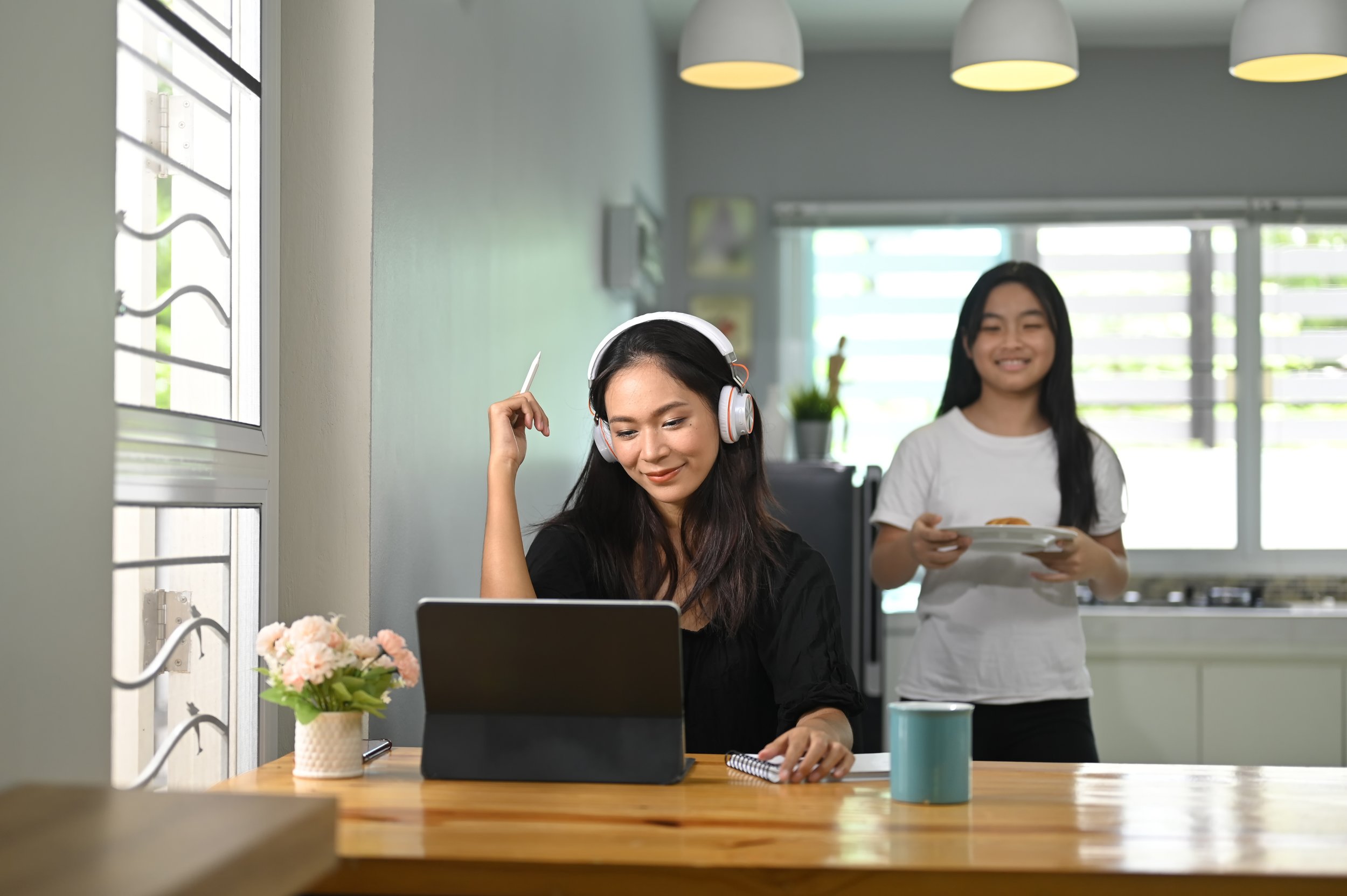















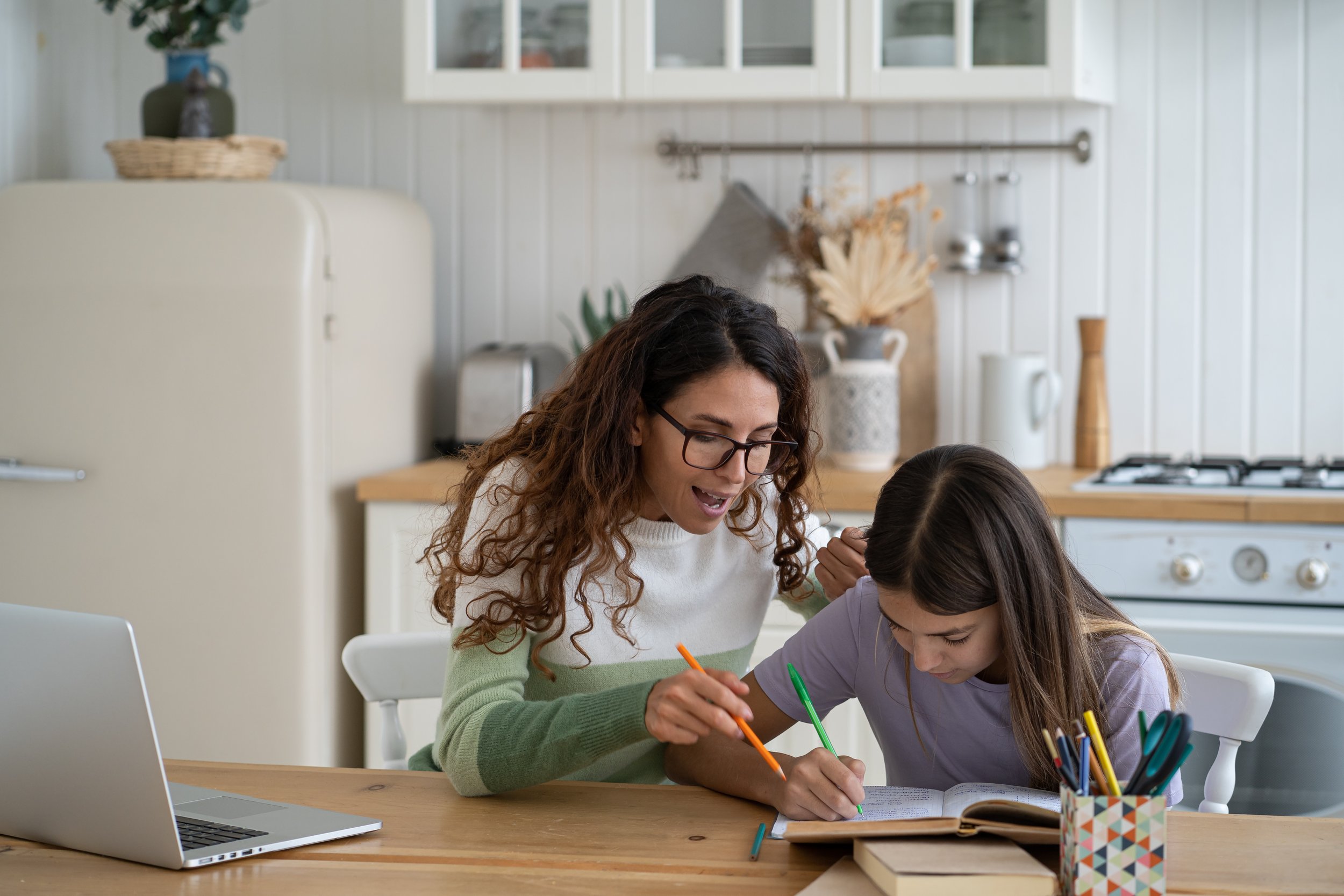


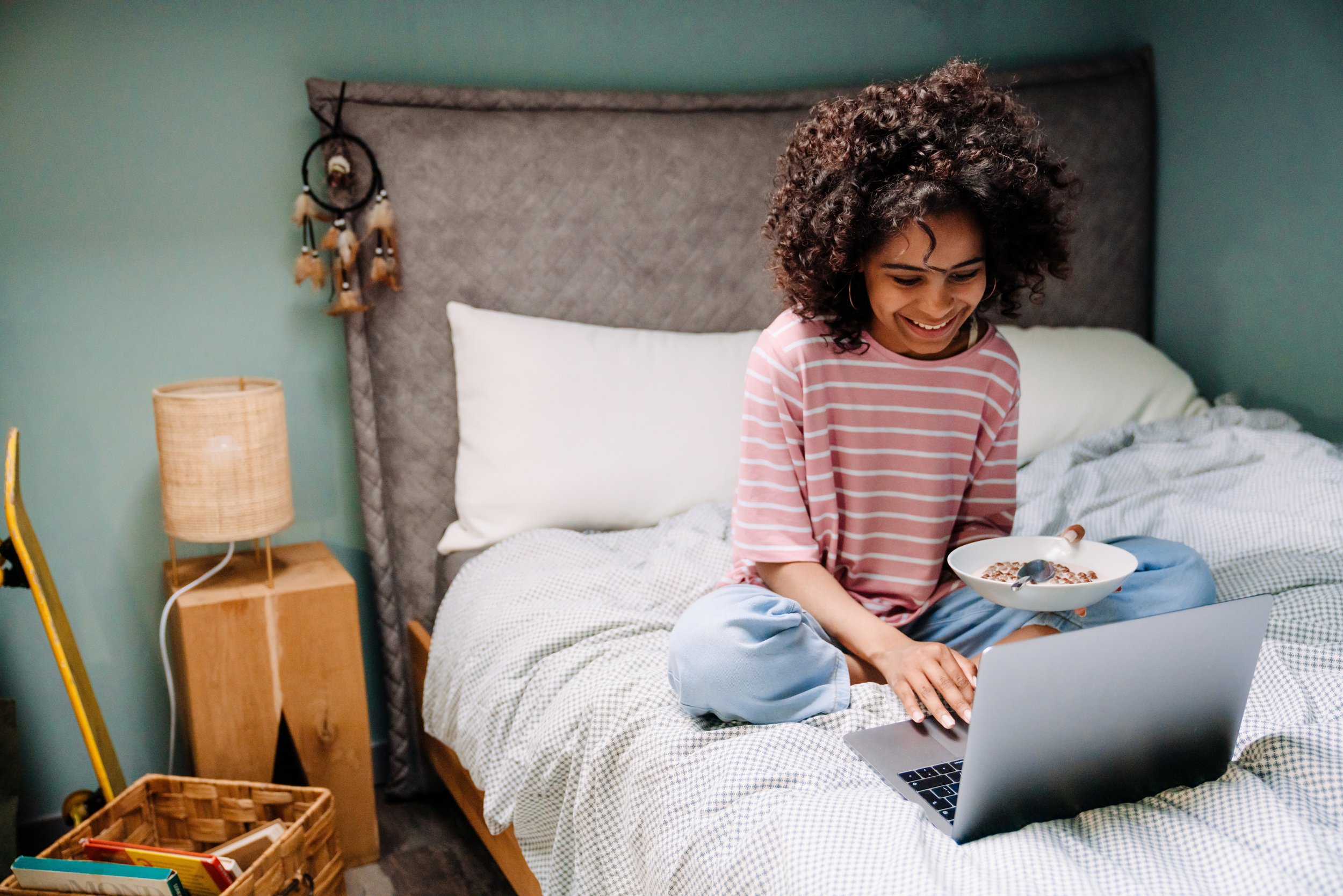



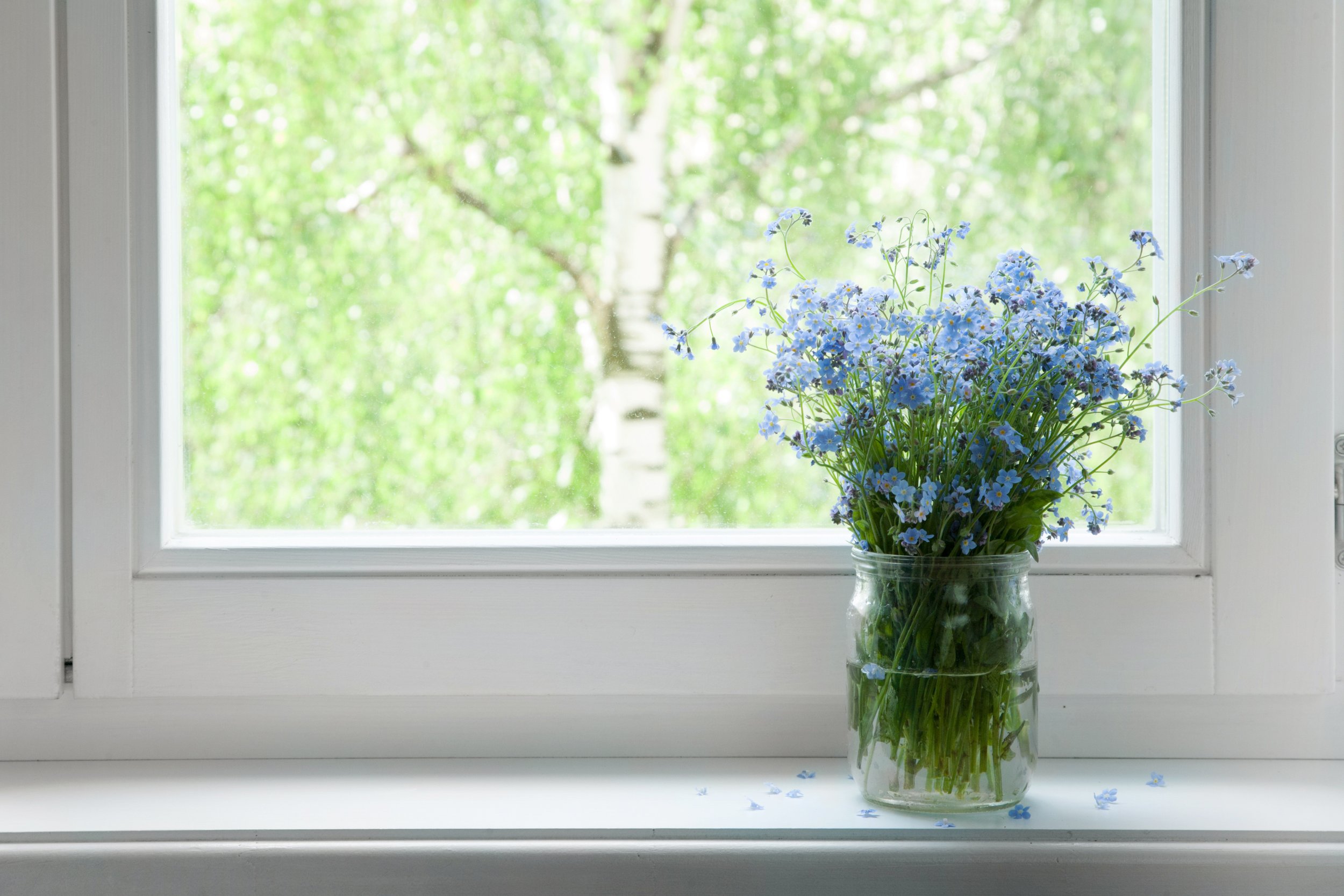
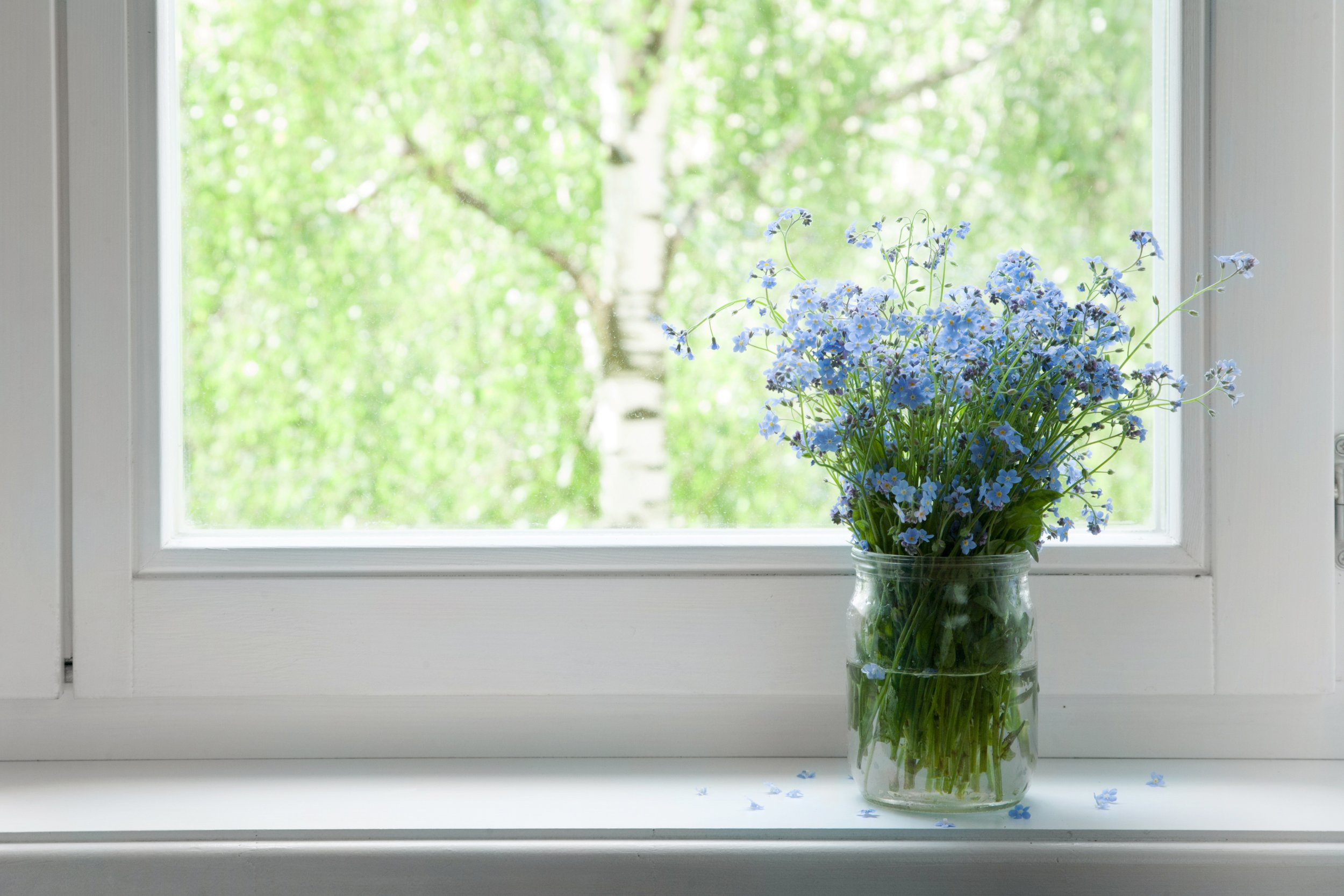







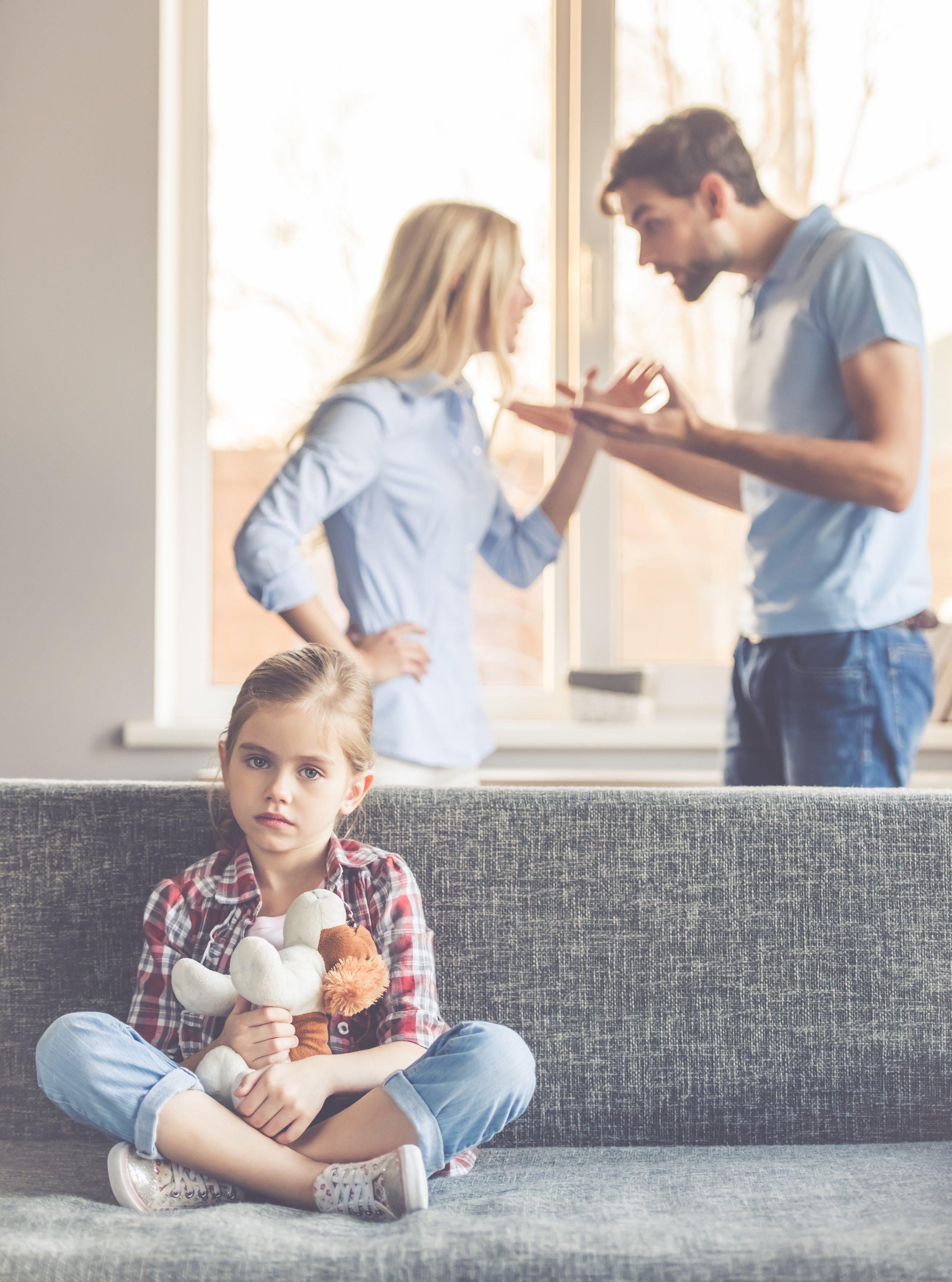








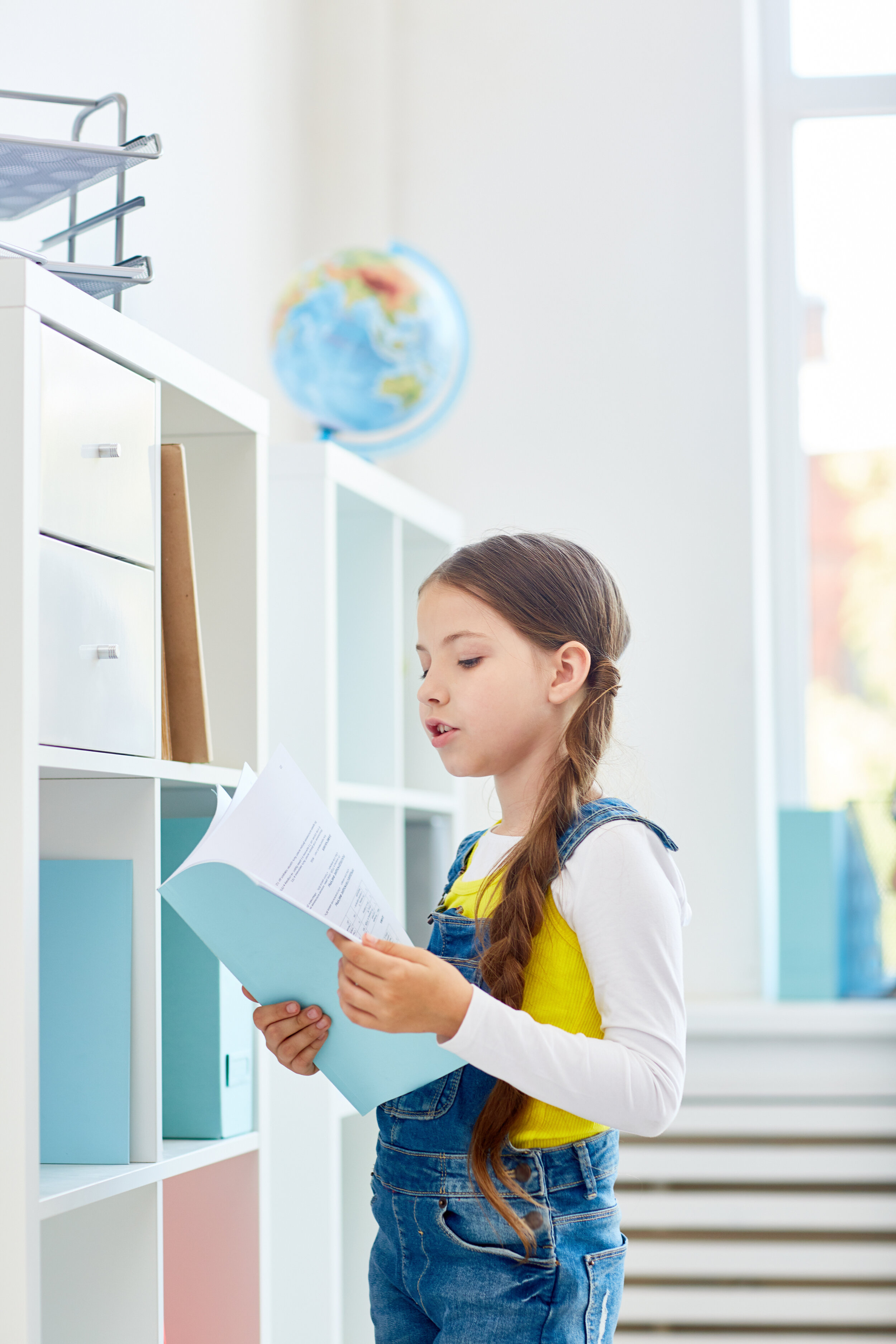









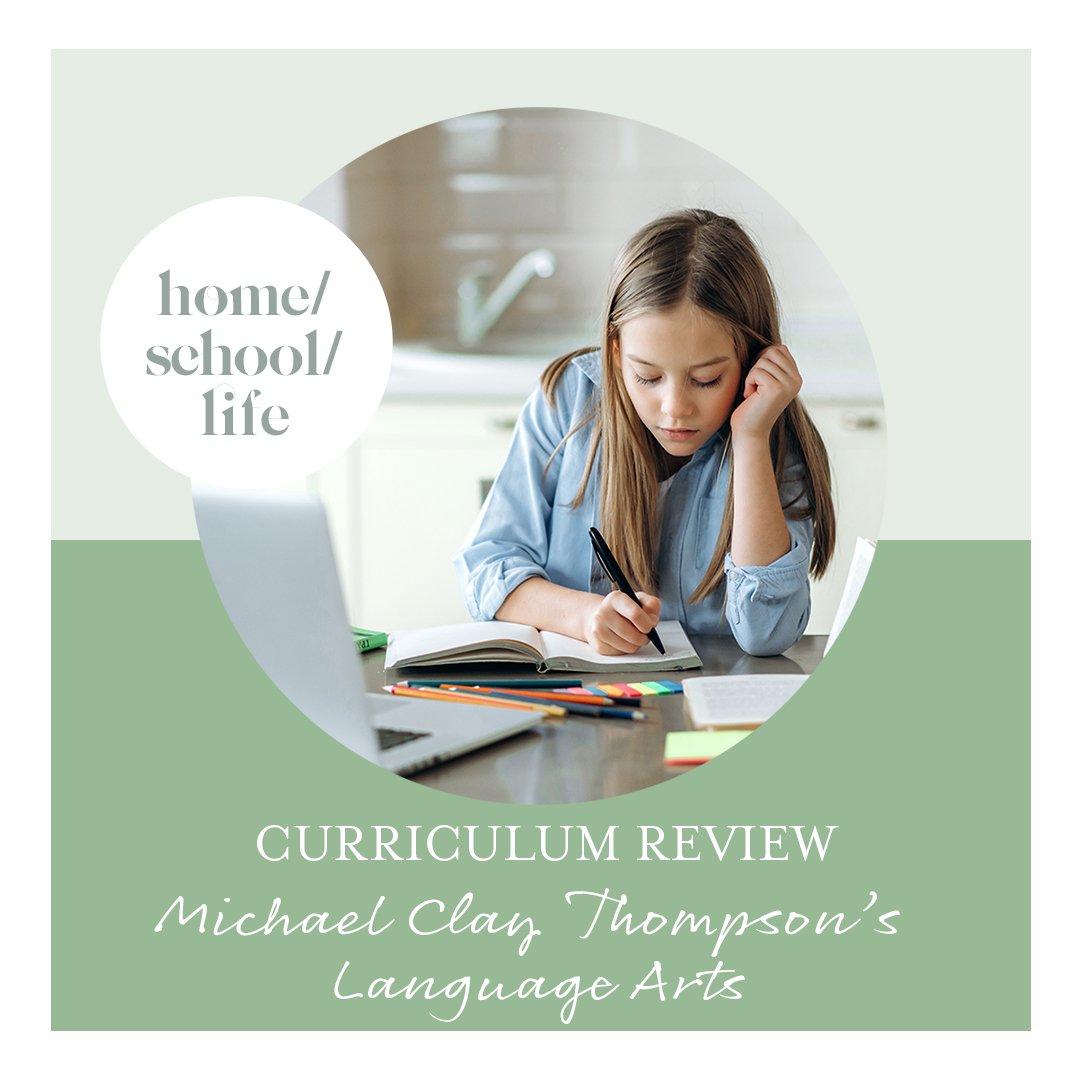



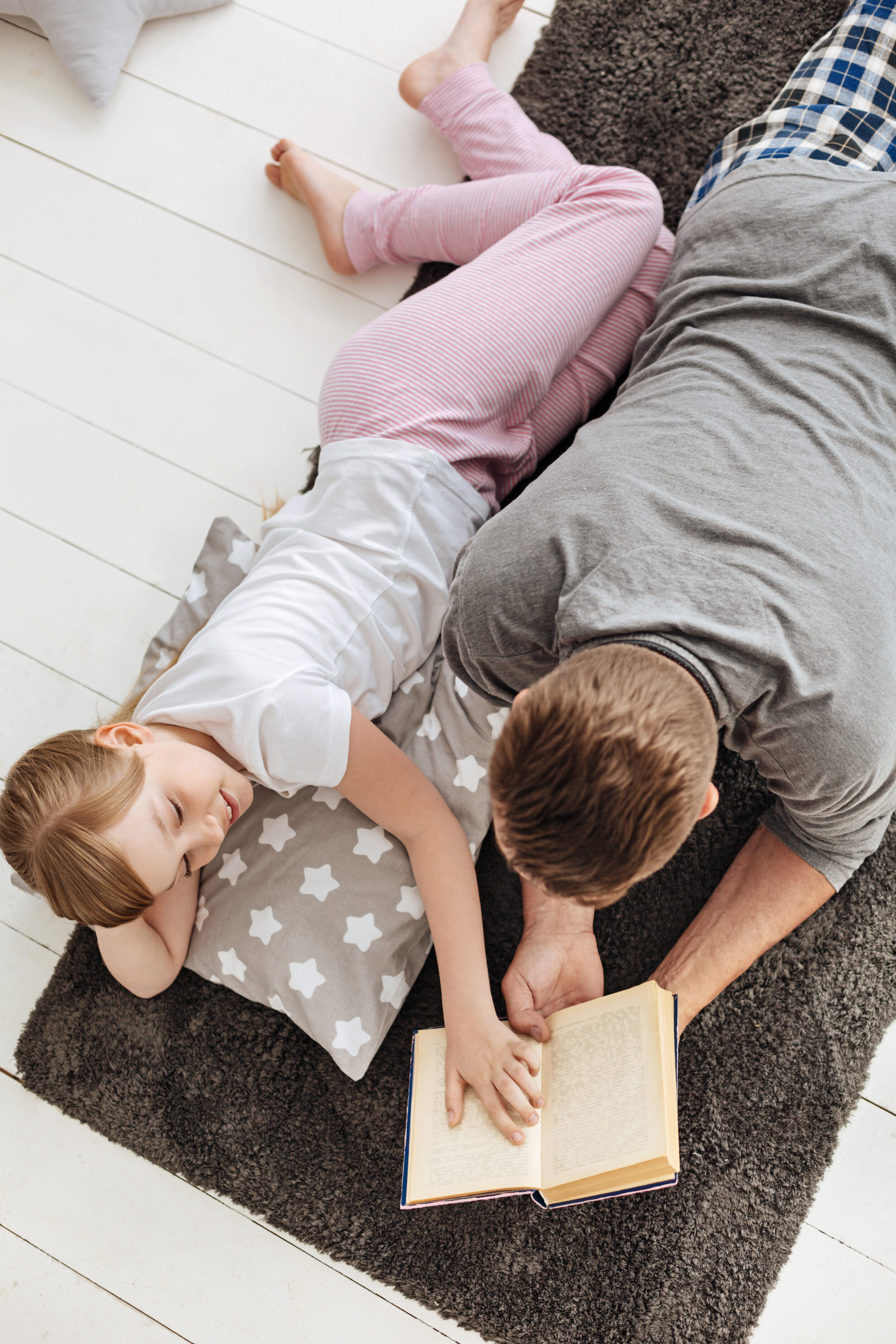
































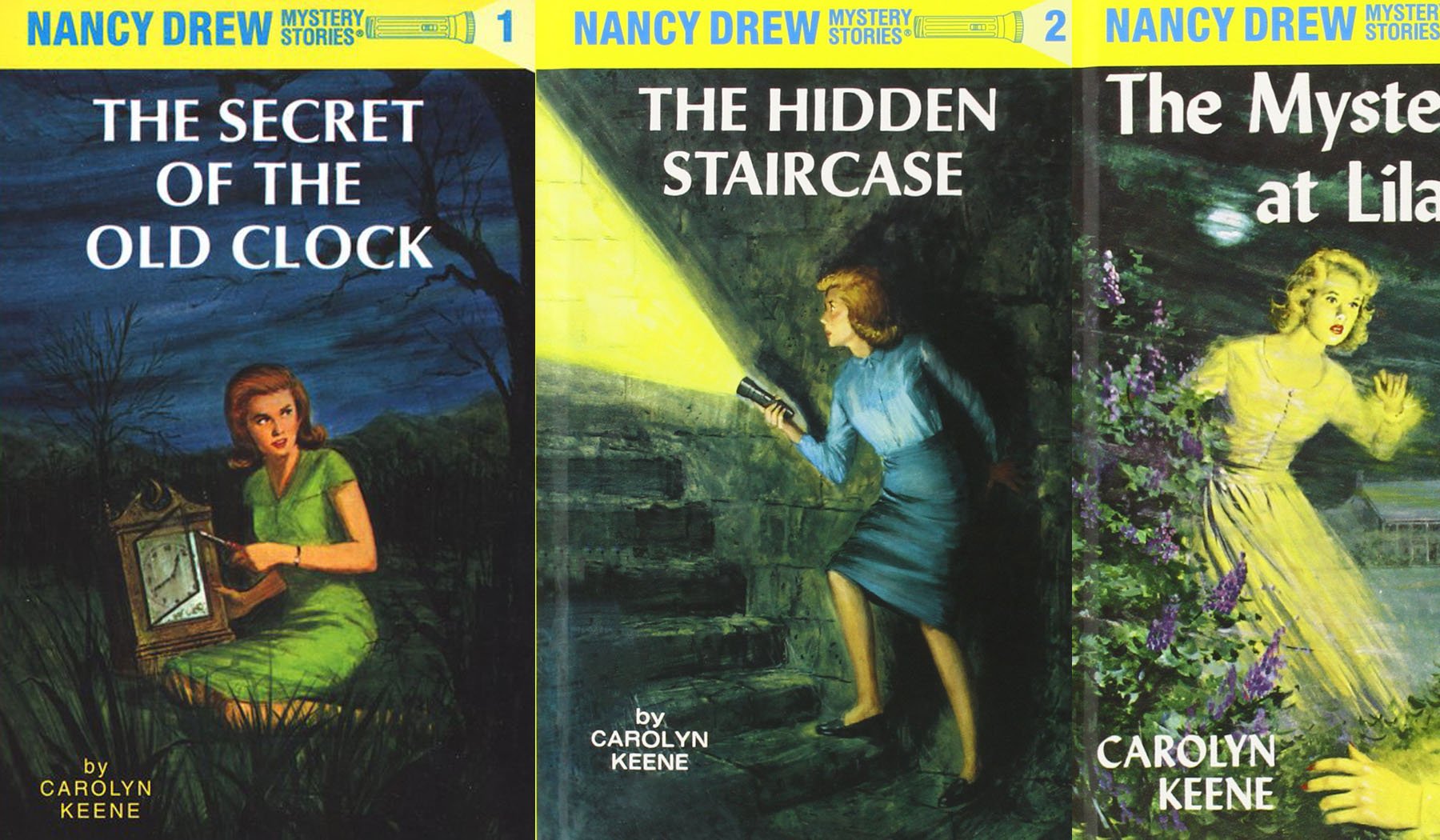












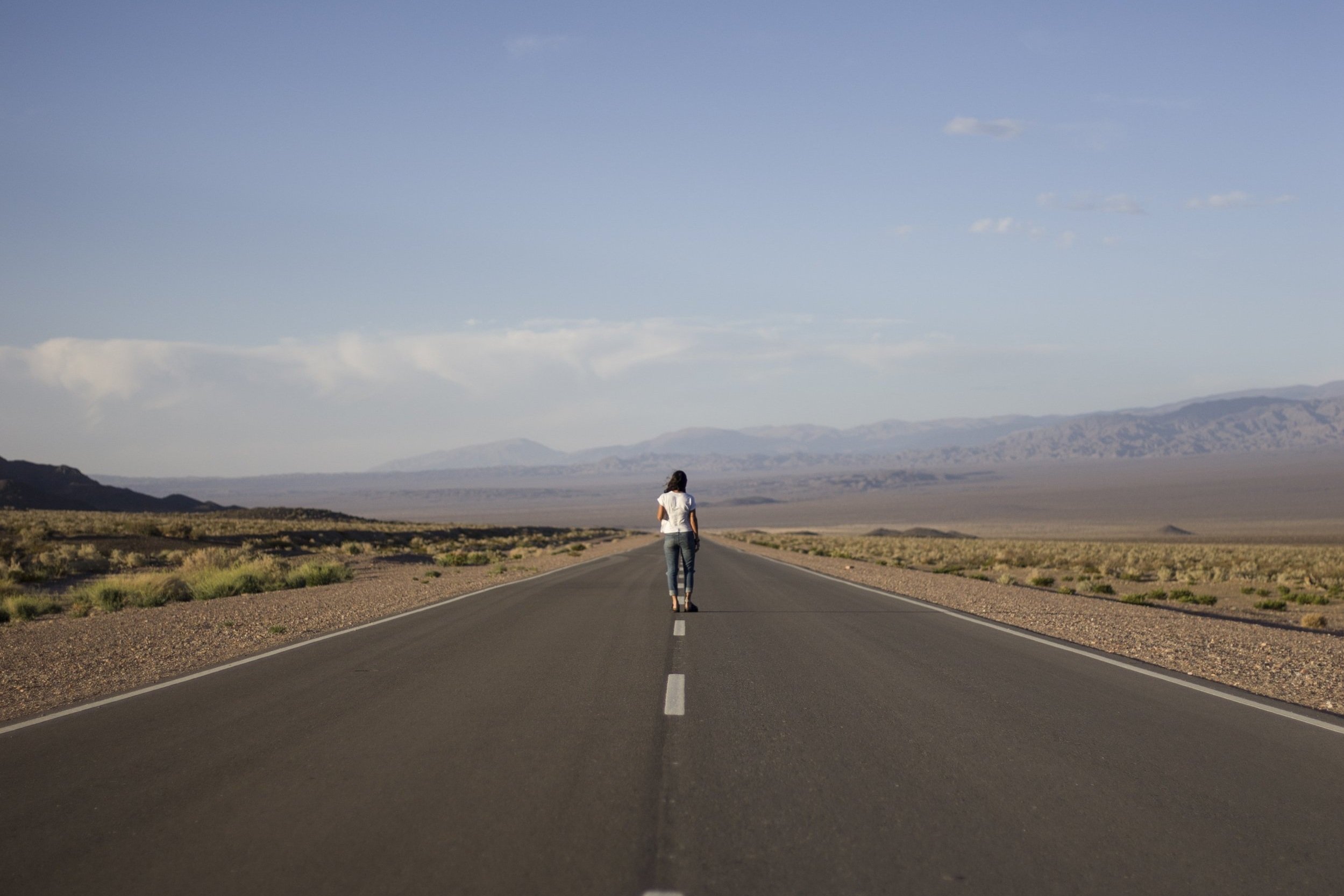



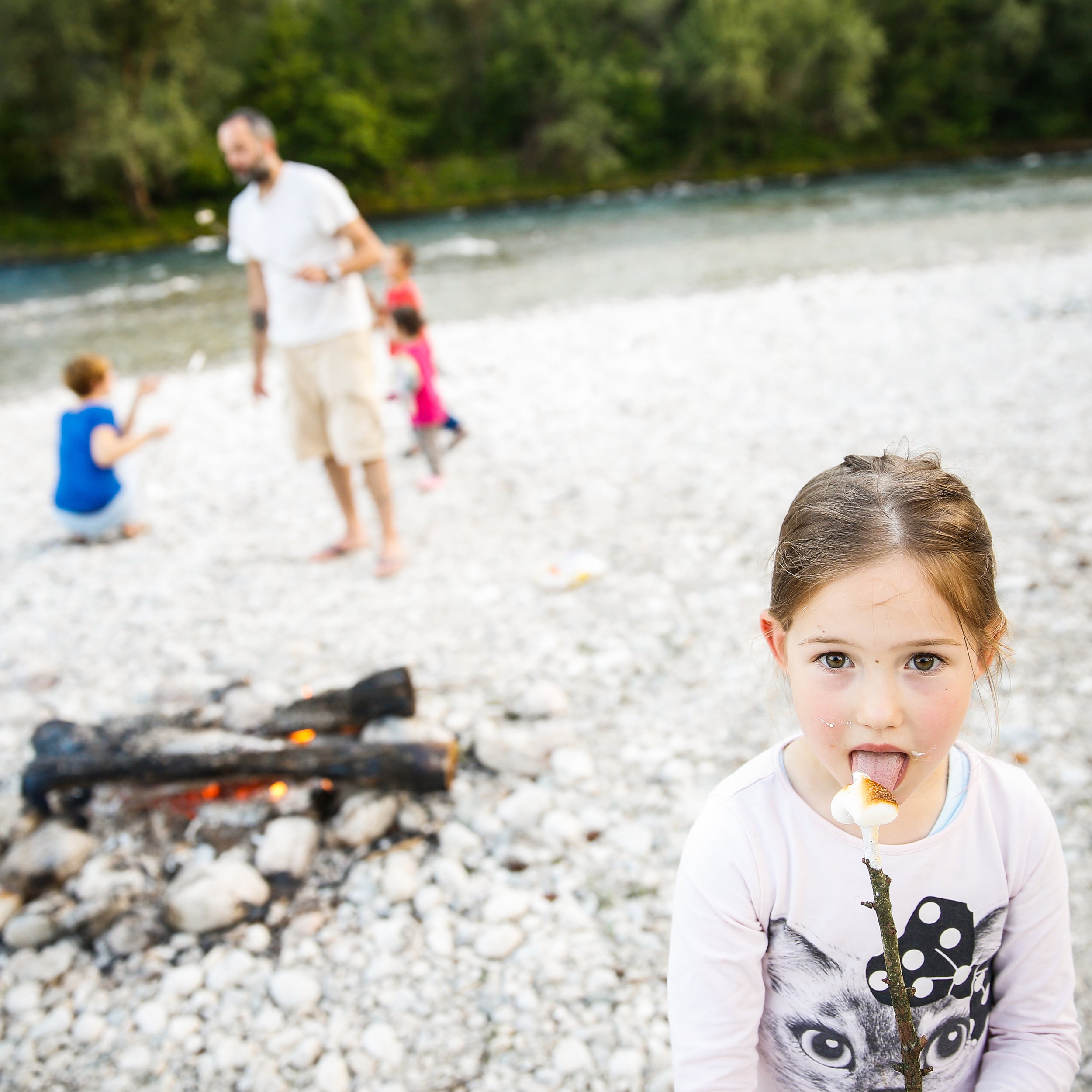










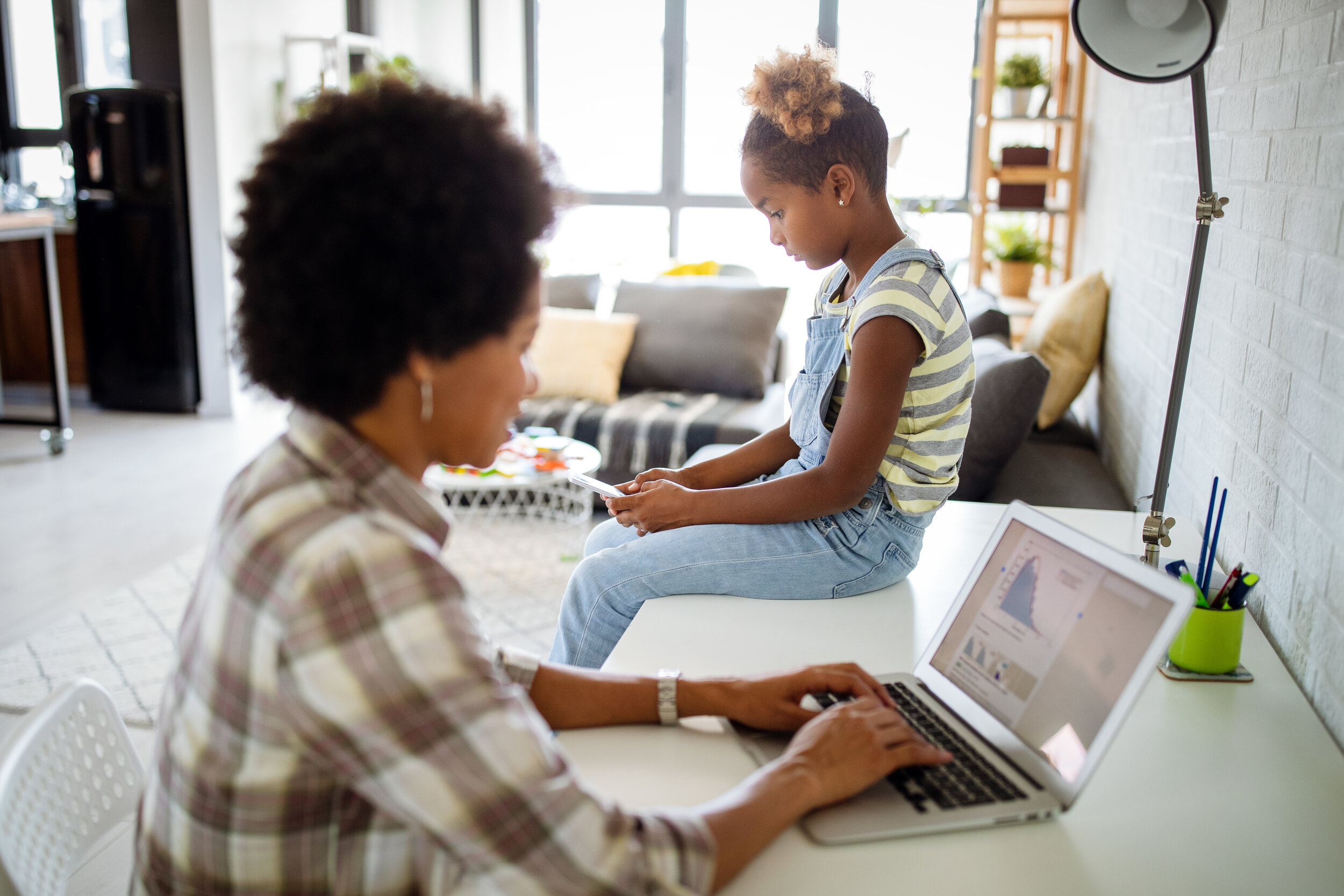





























Covid cases are spiking, and lots of secular homeschool families are still navigating social activities with extra caution. Having clear policies for homeschool co-ops and get-togethers can help all the folks in your community make the best choices for their families.